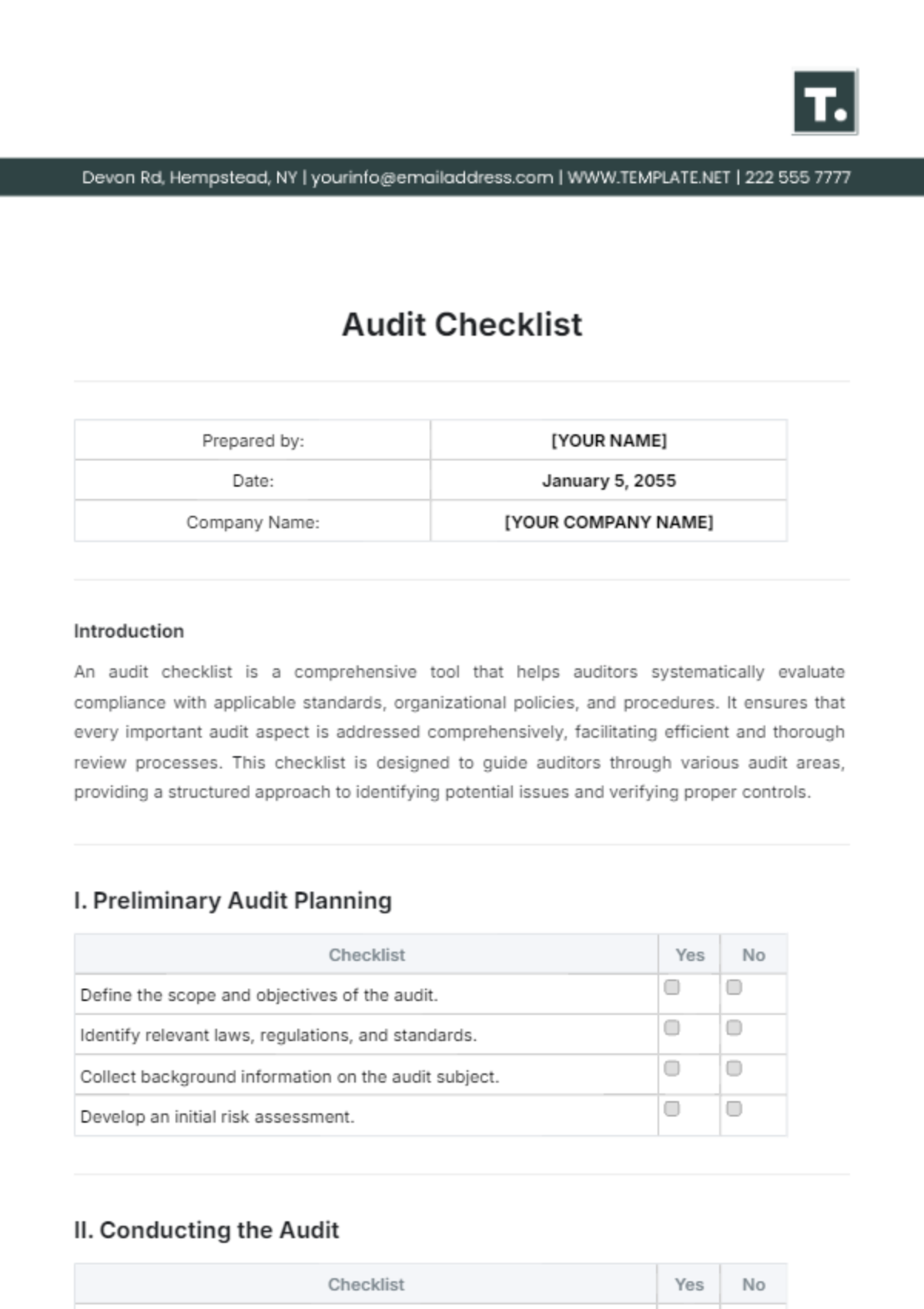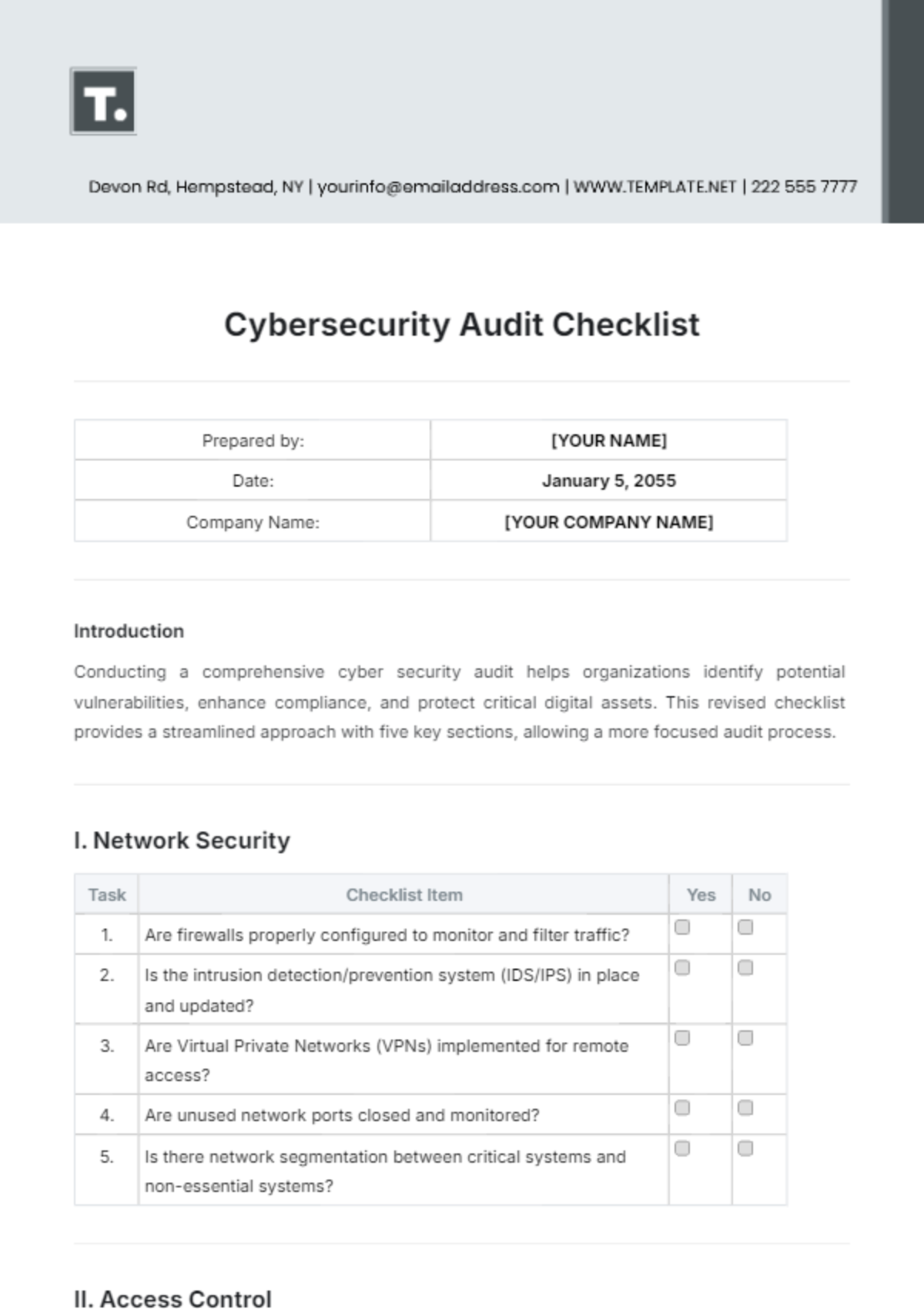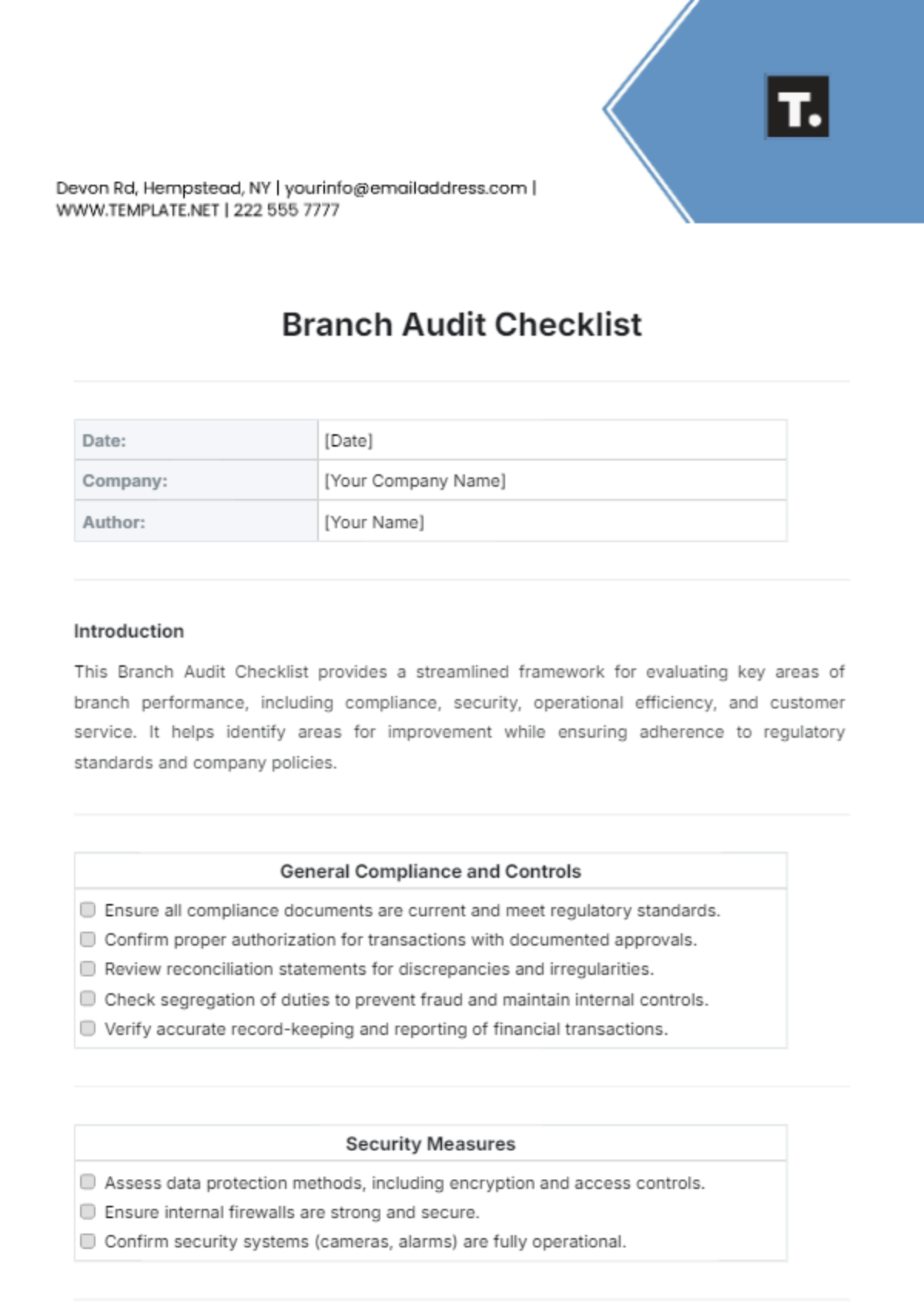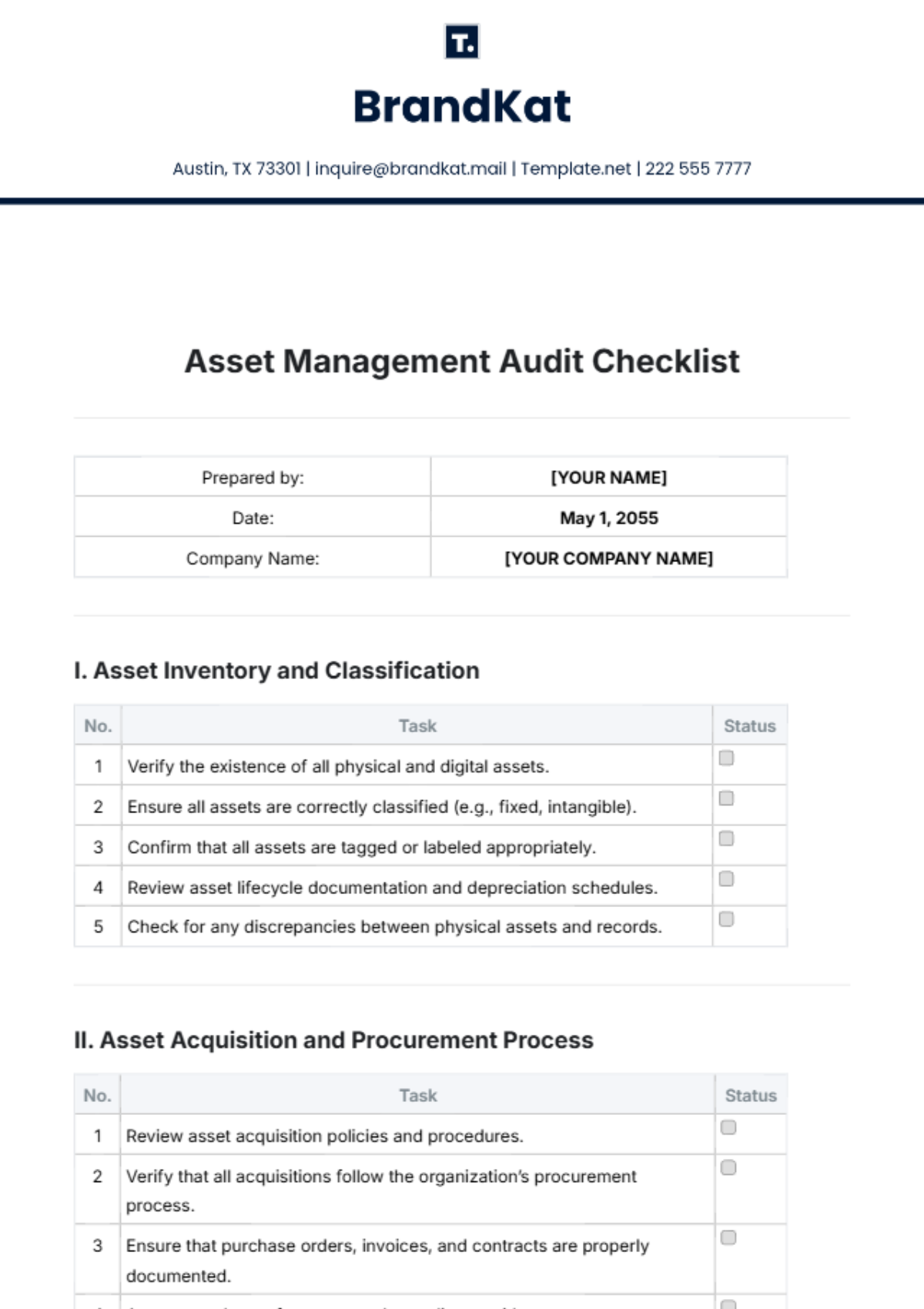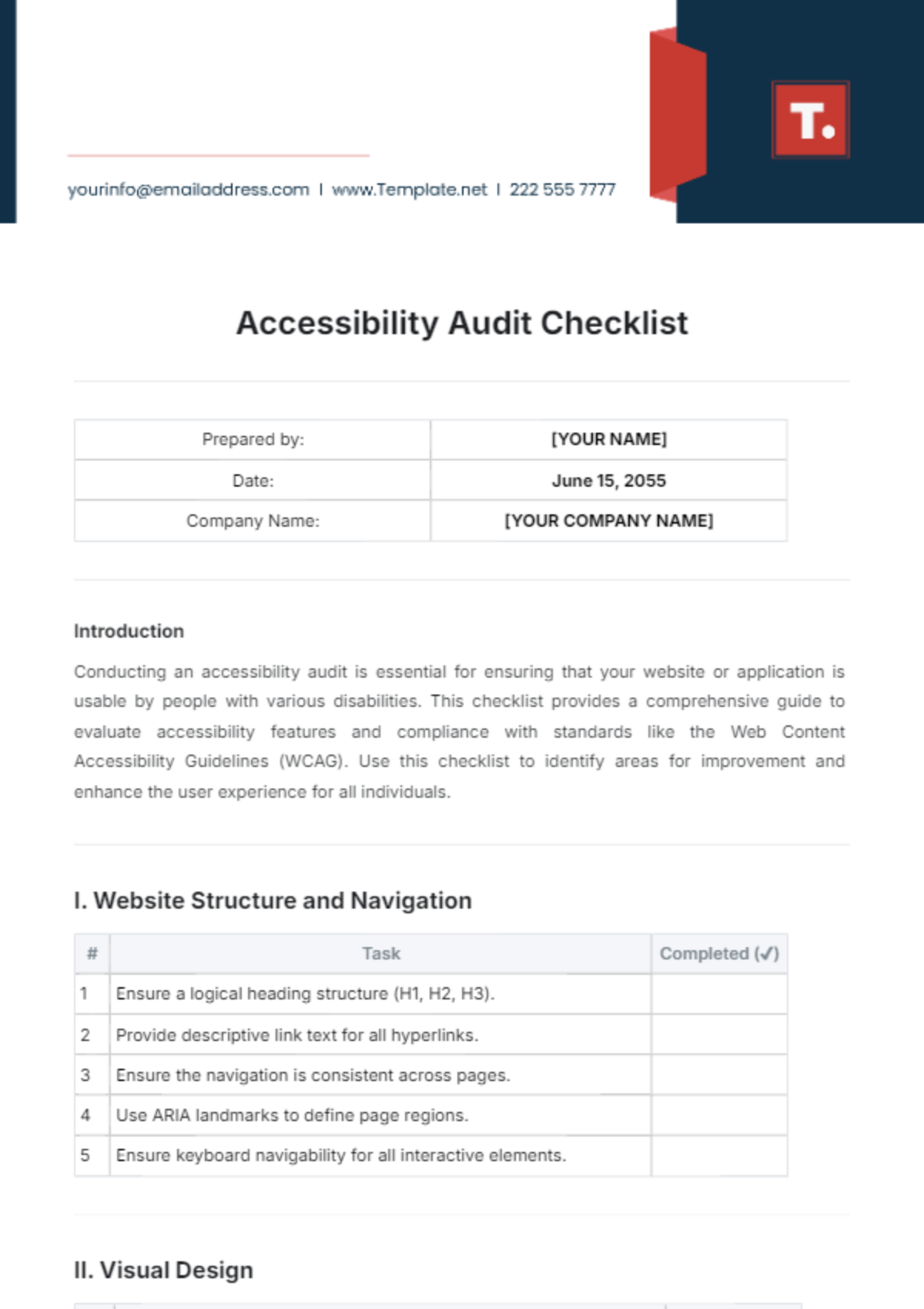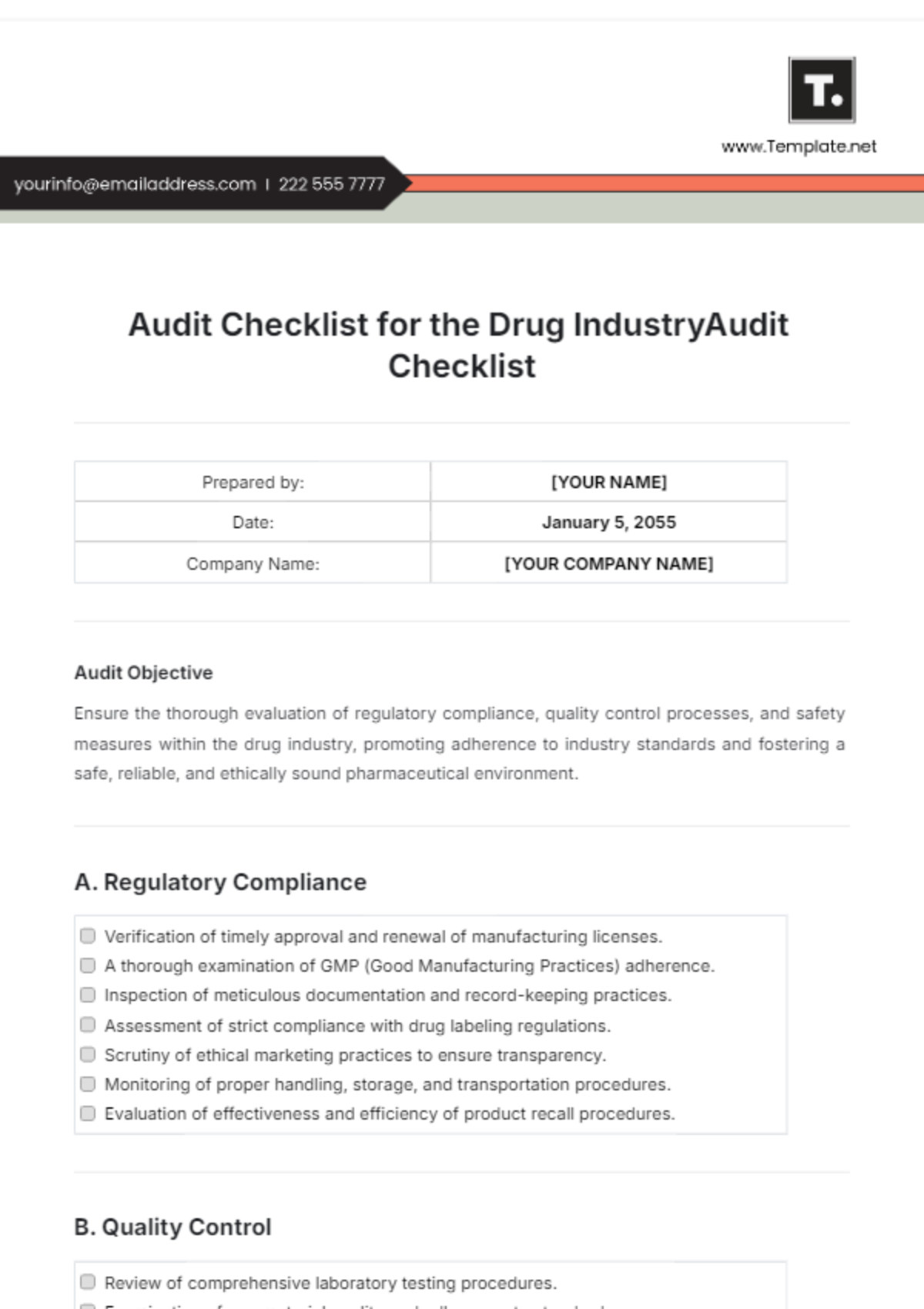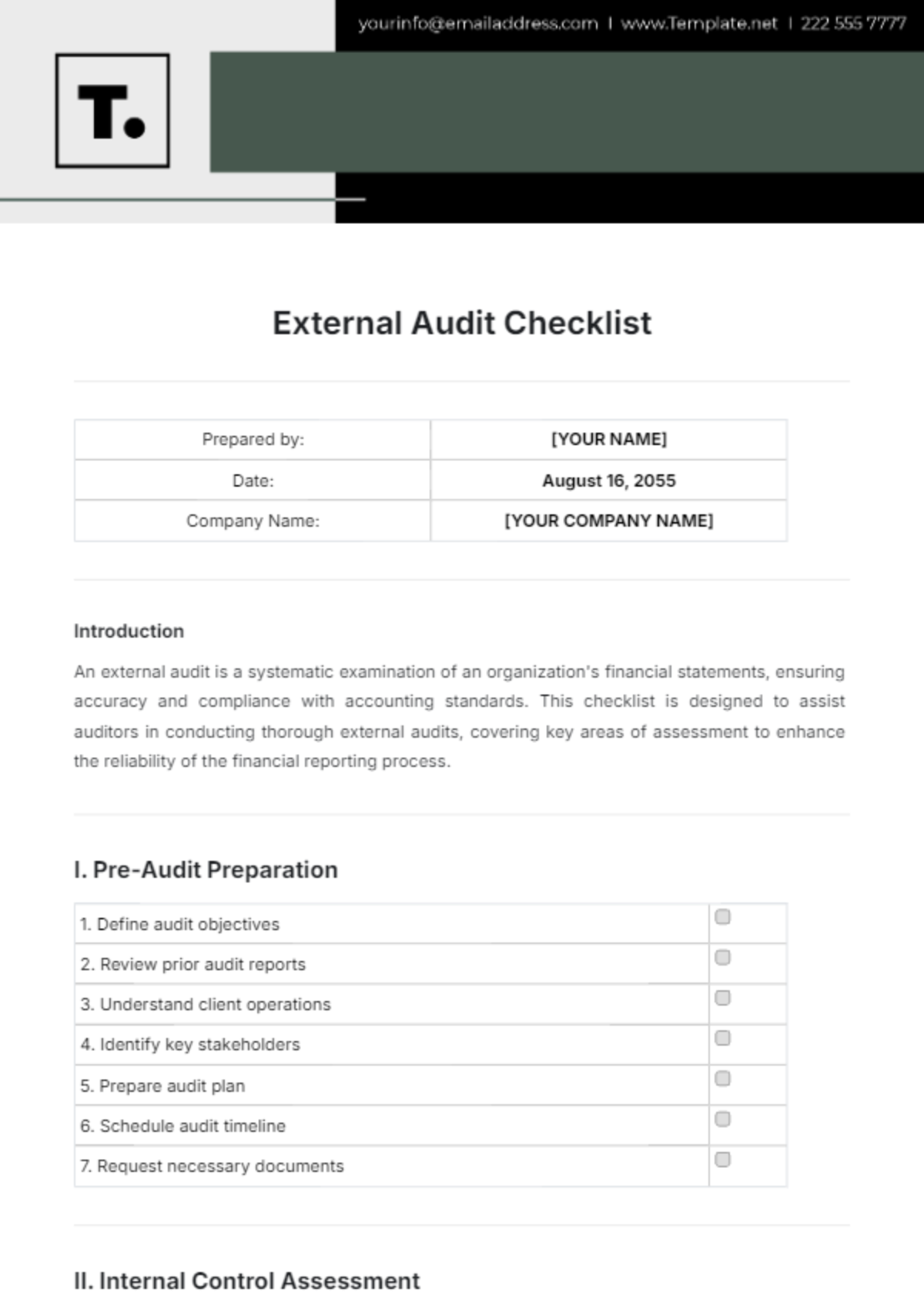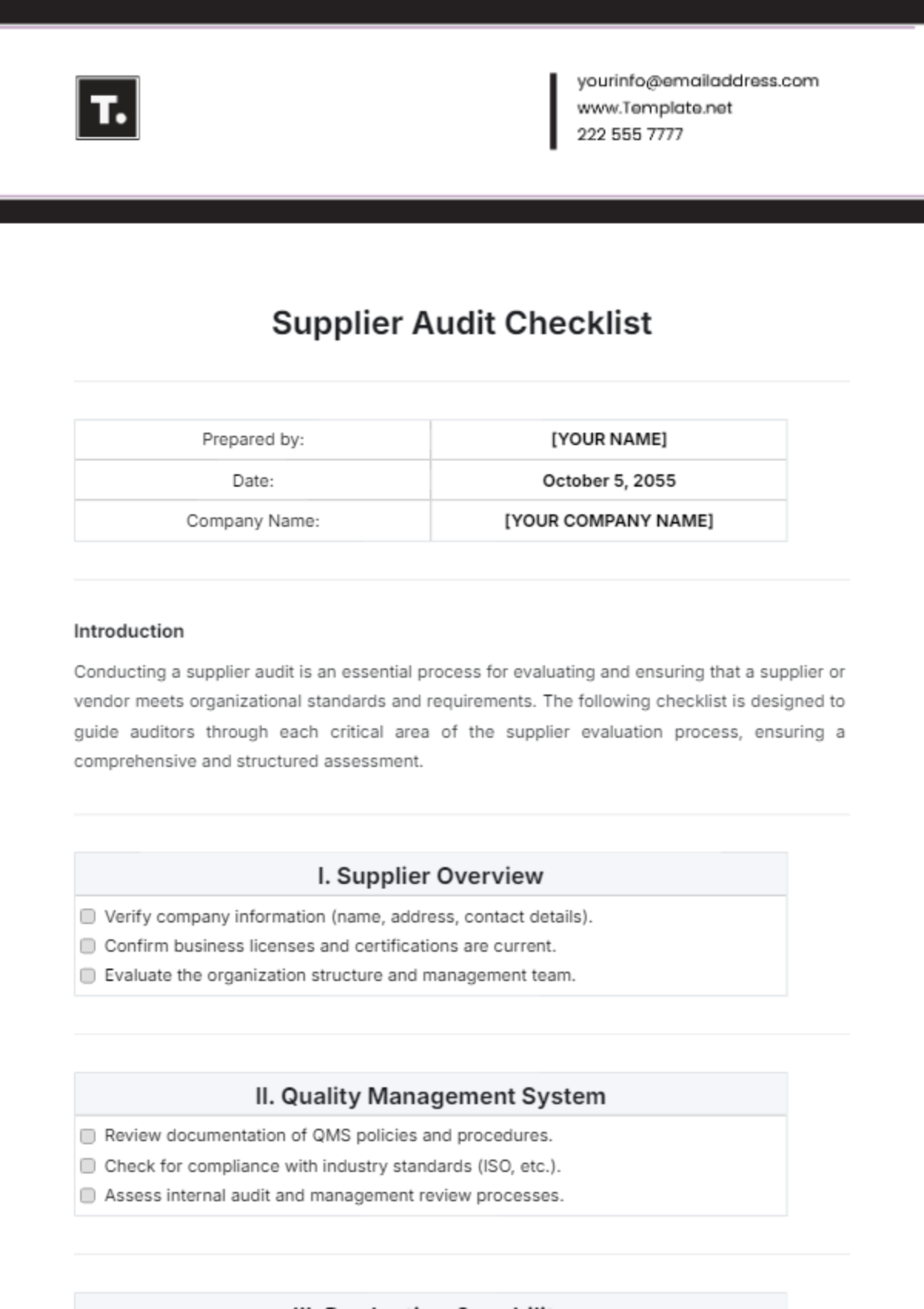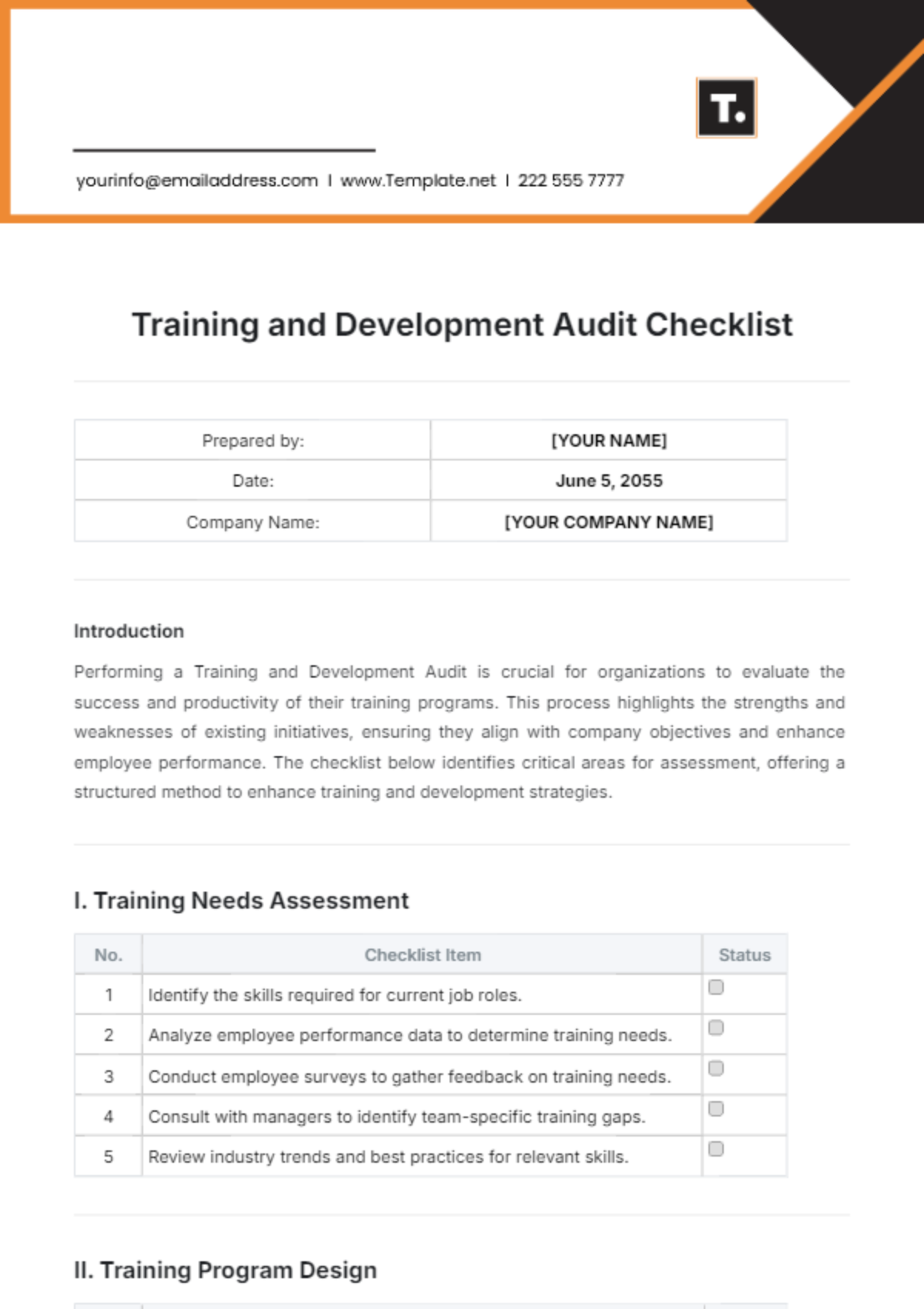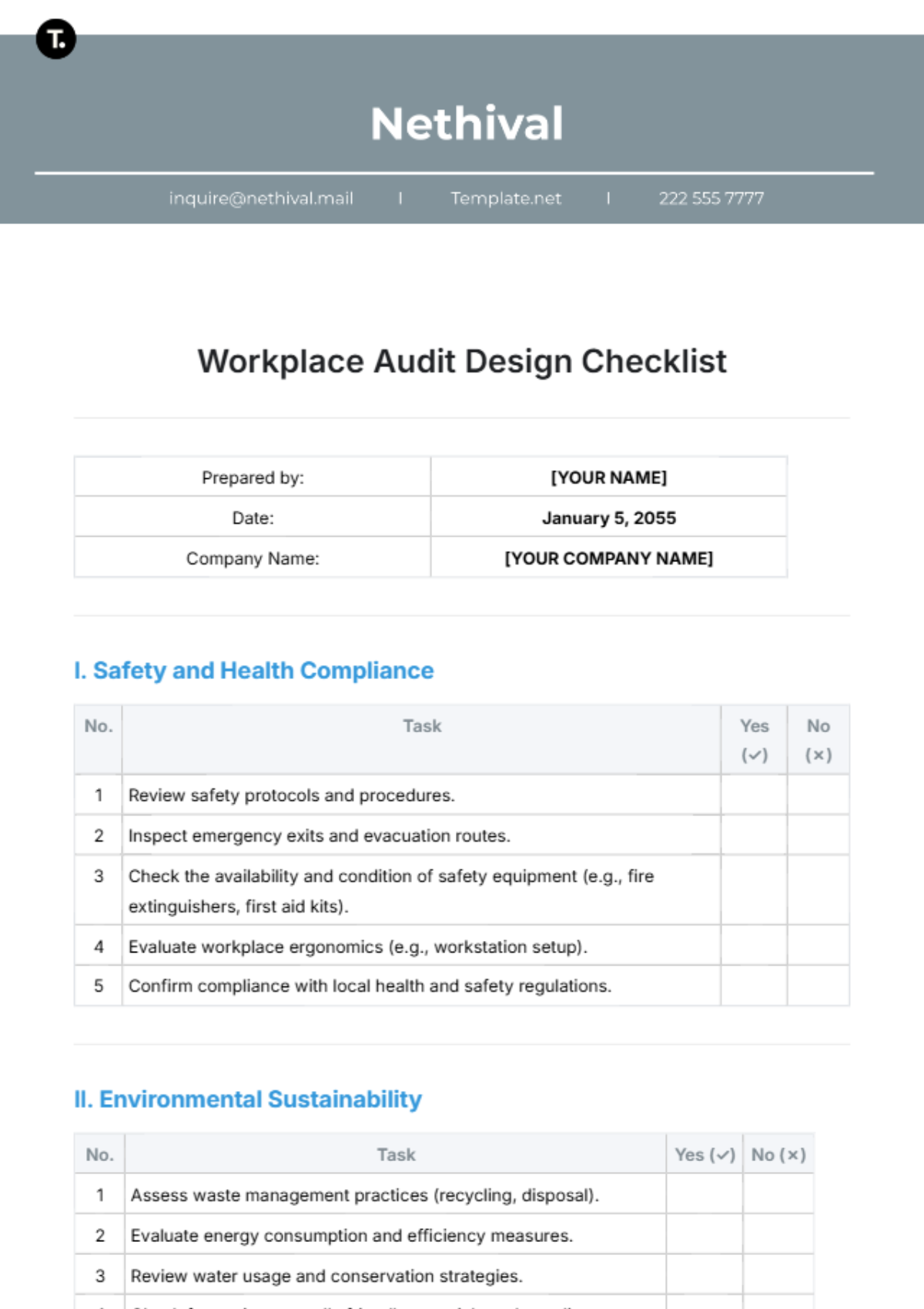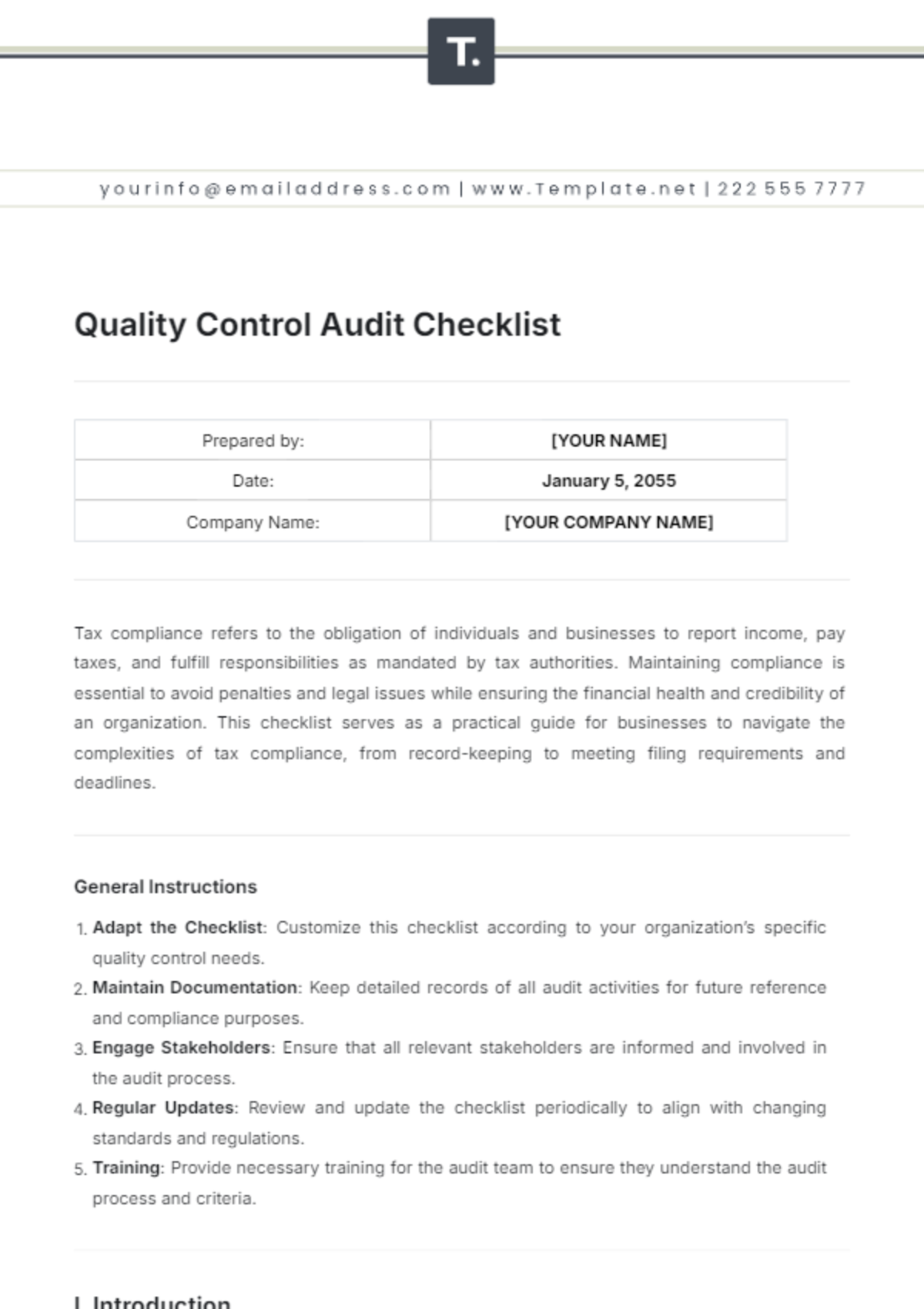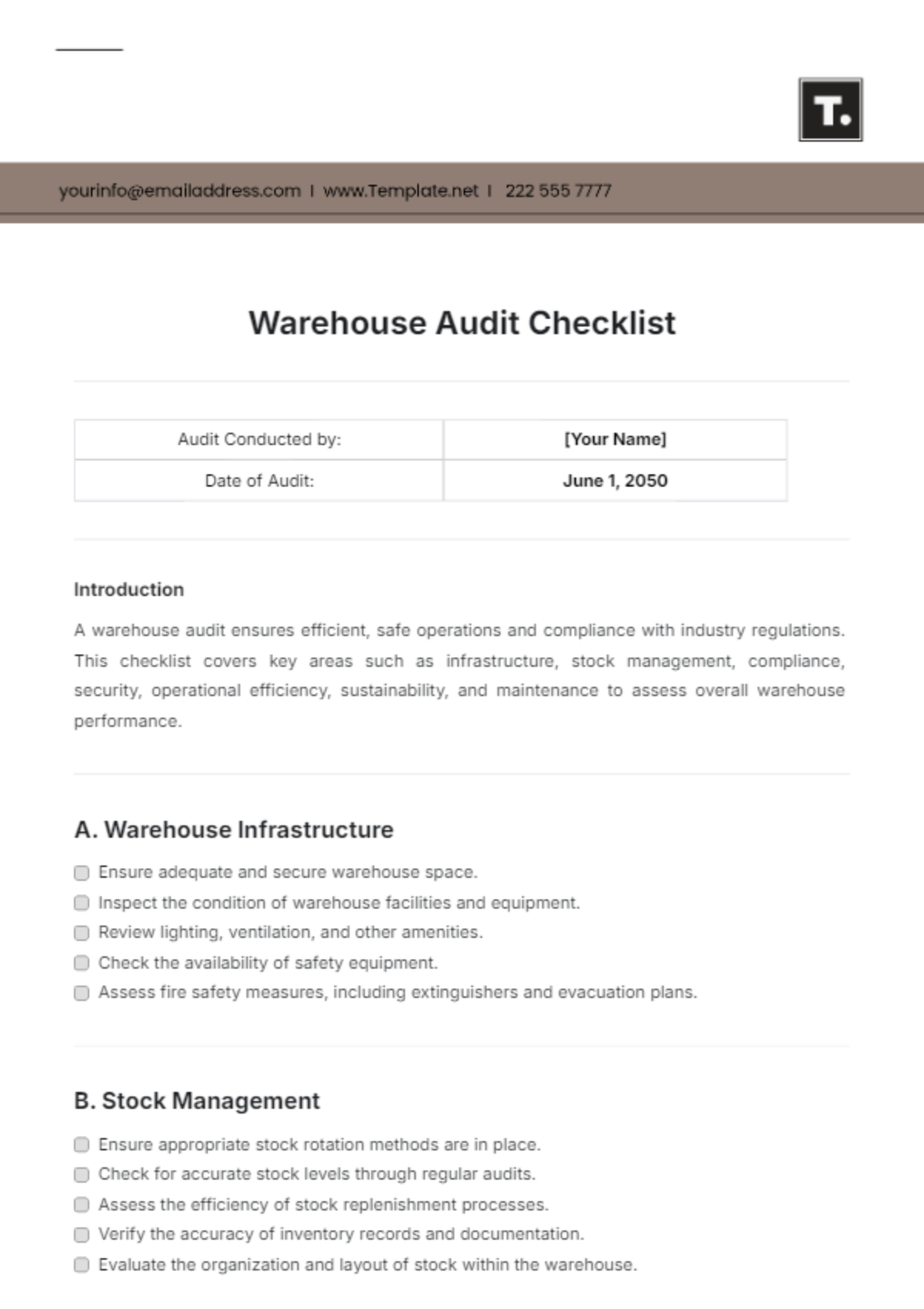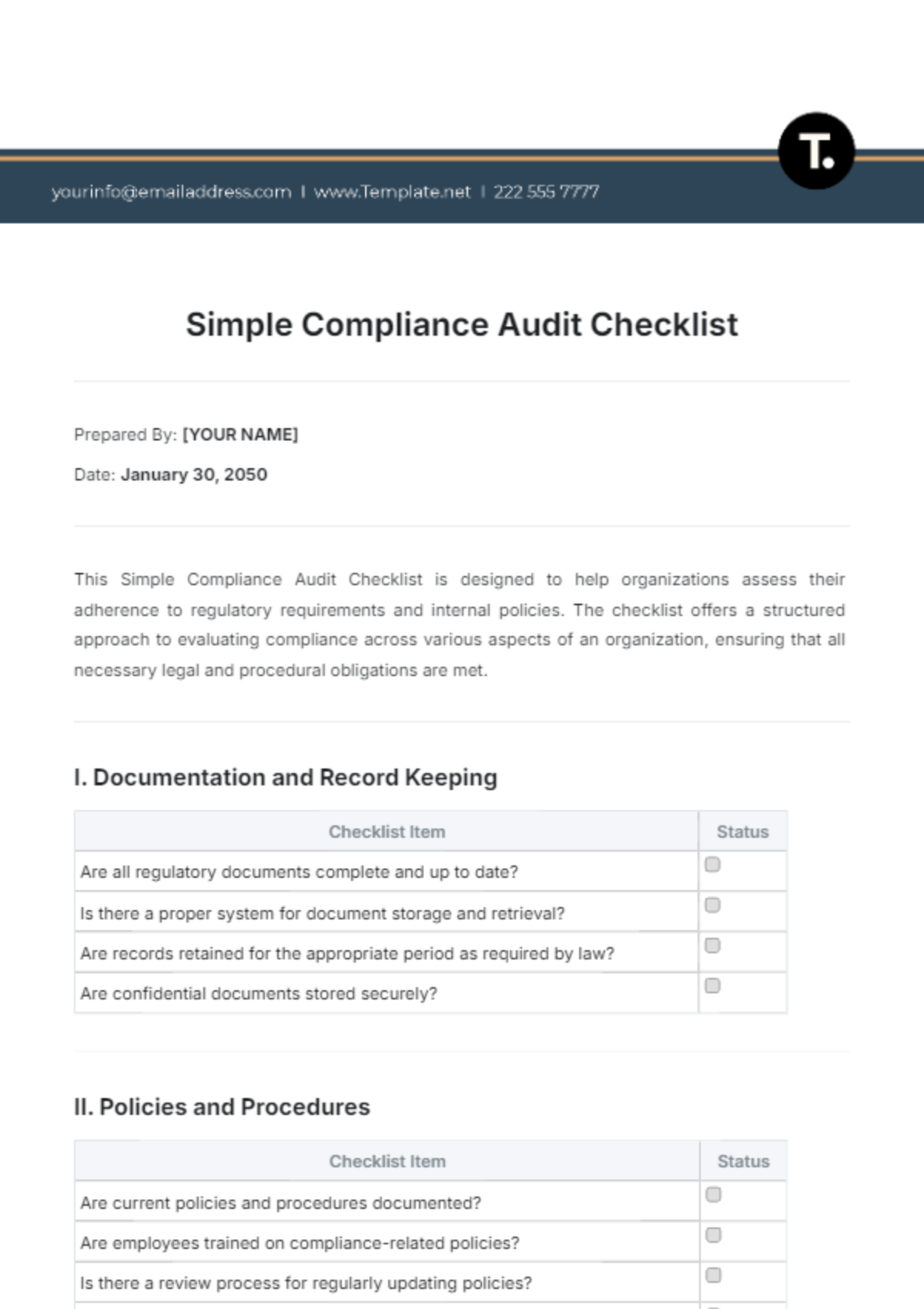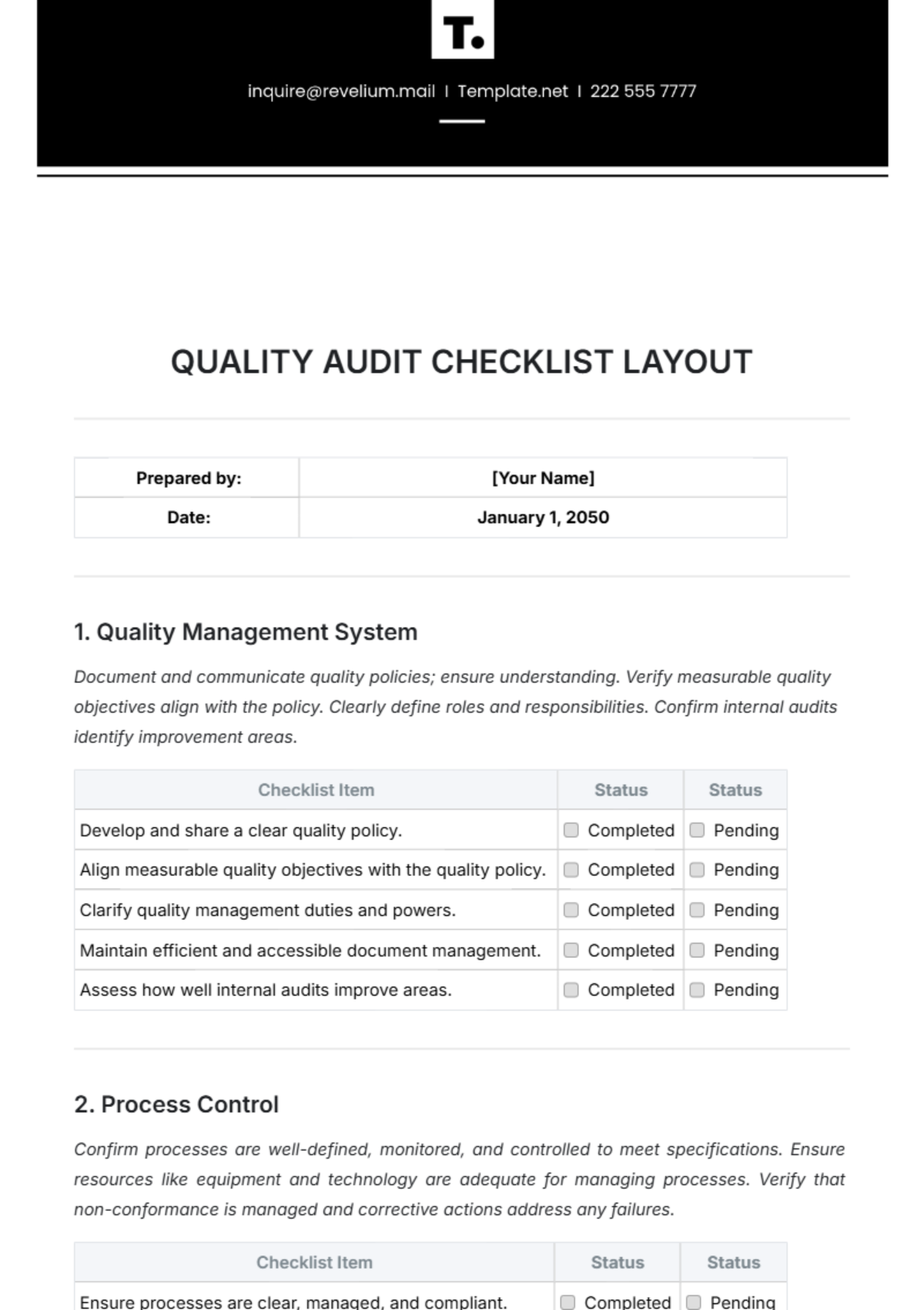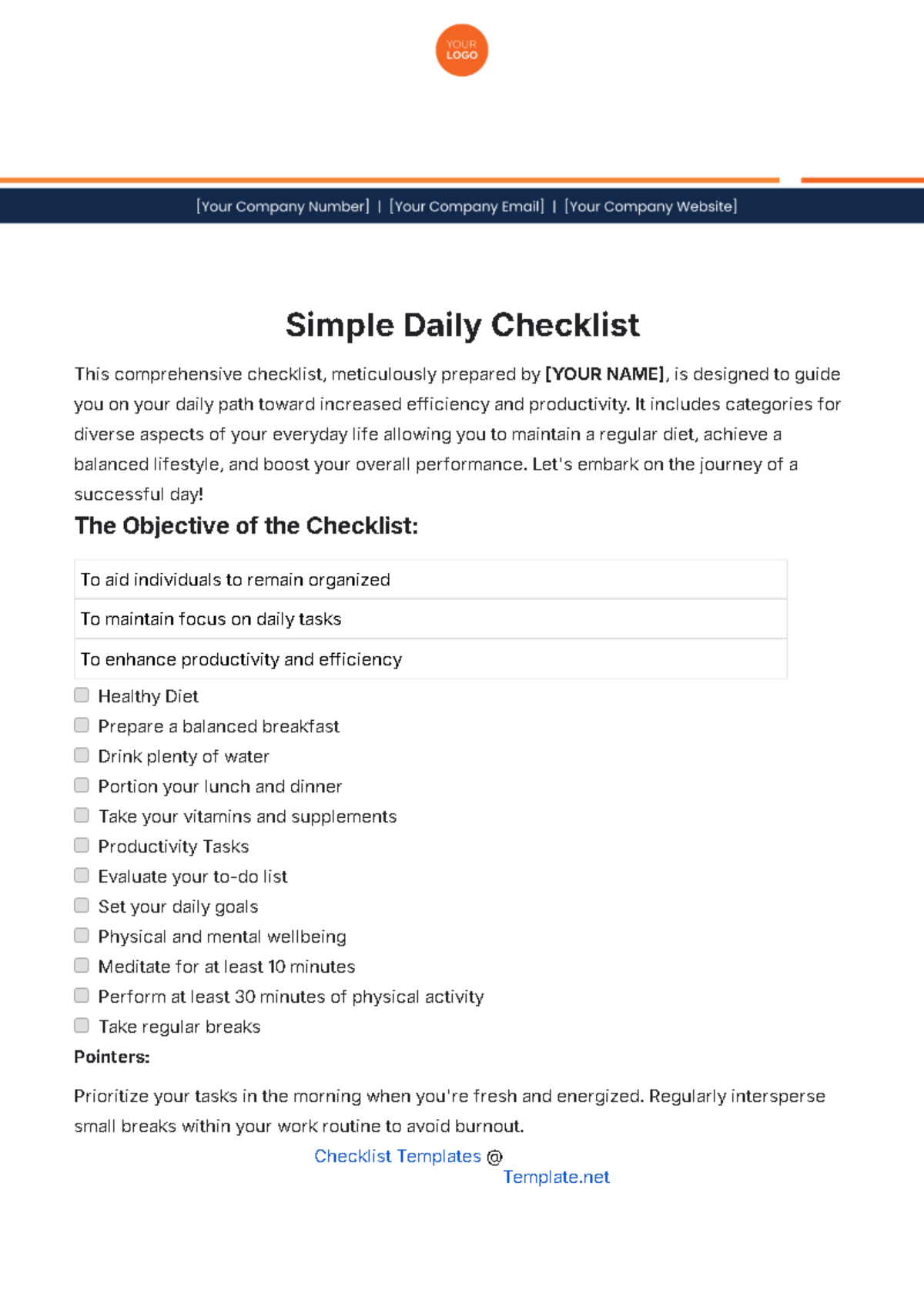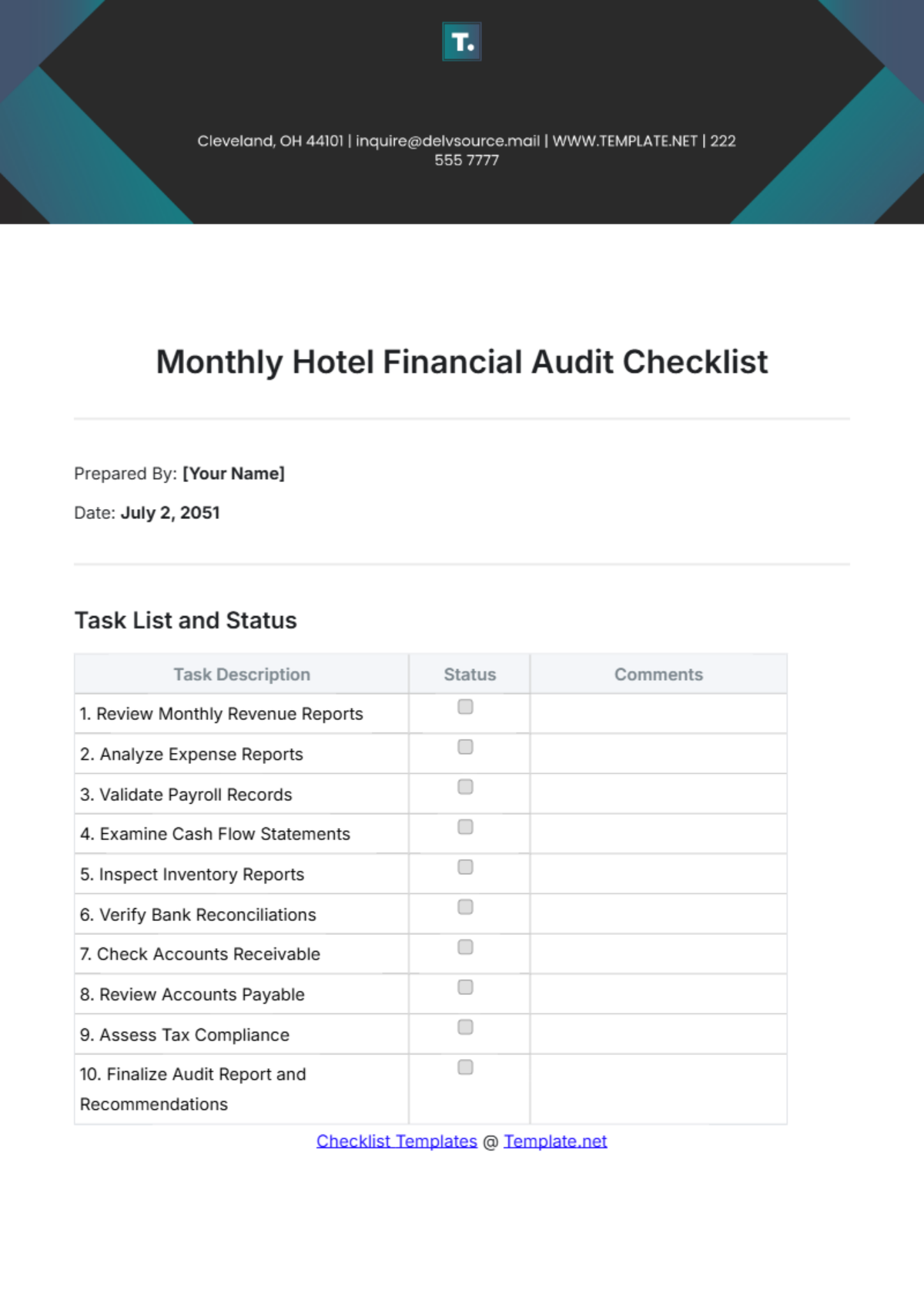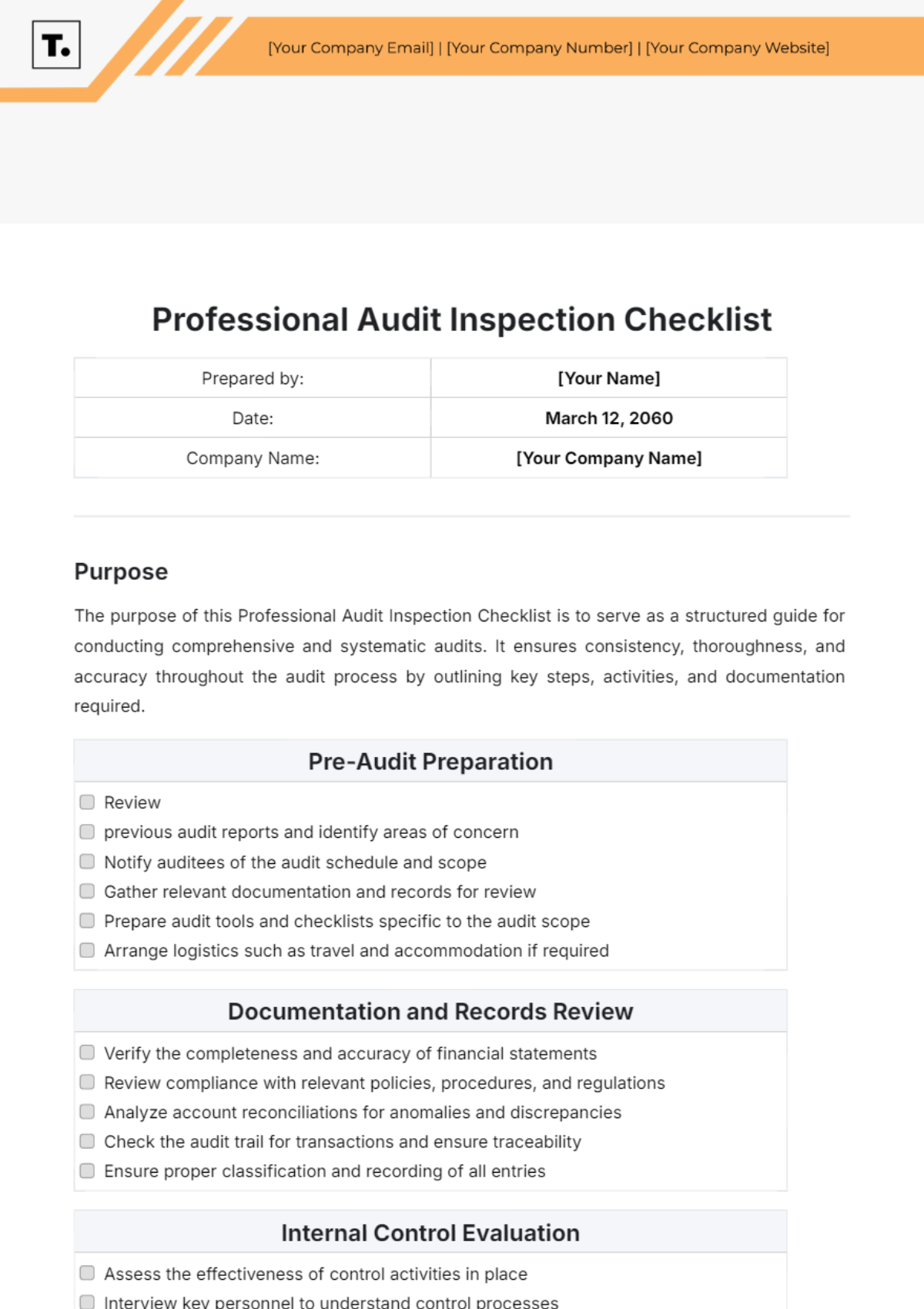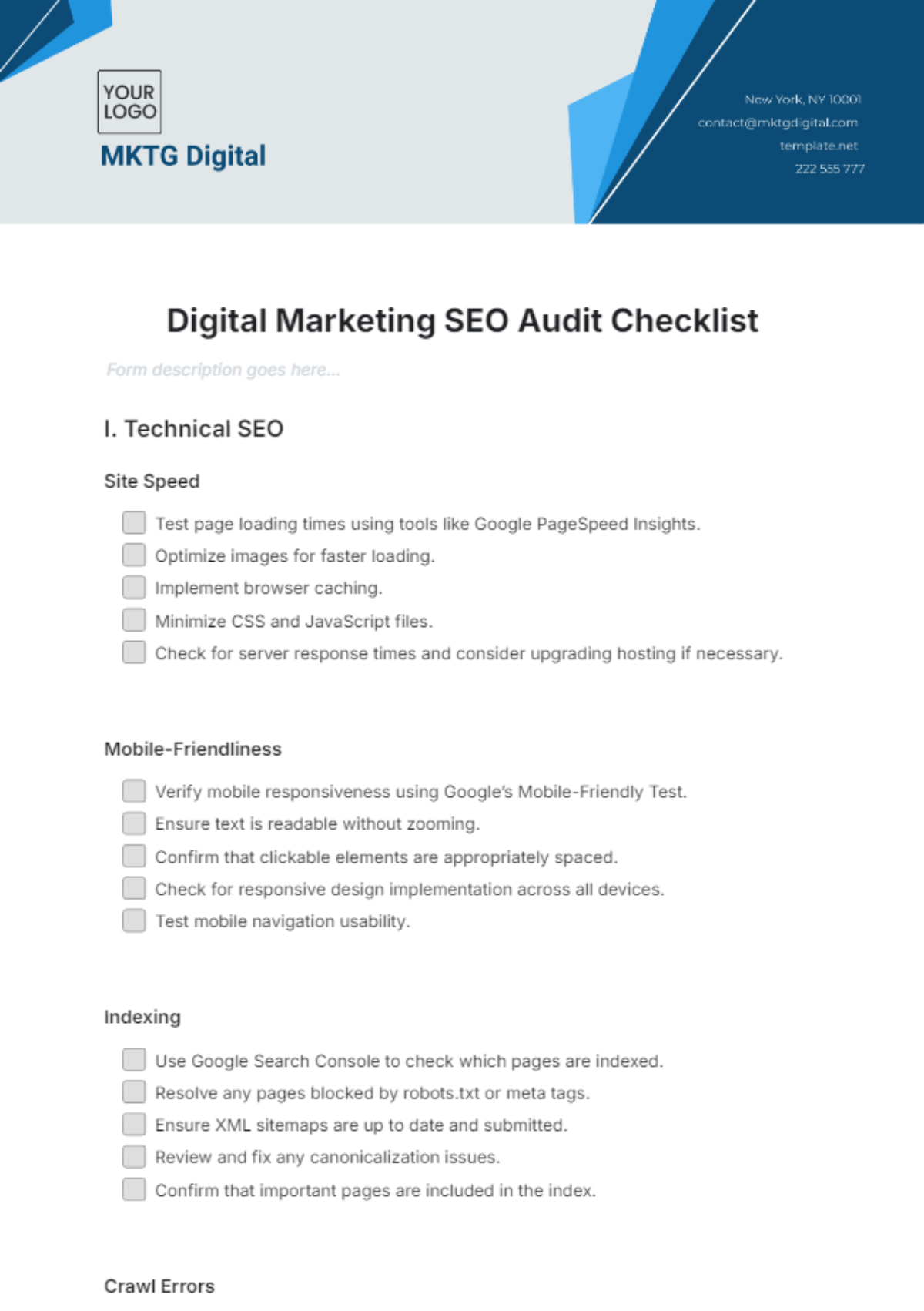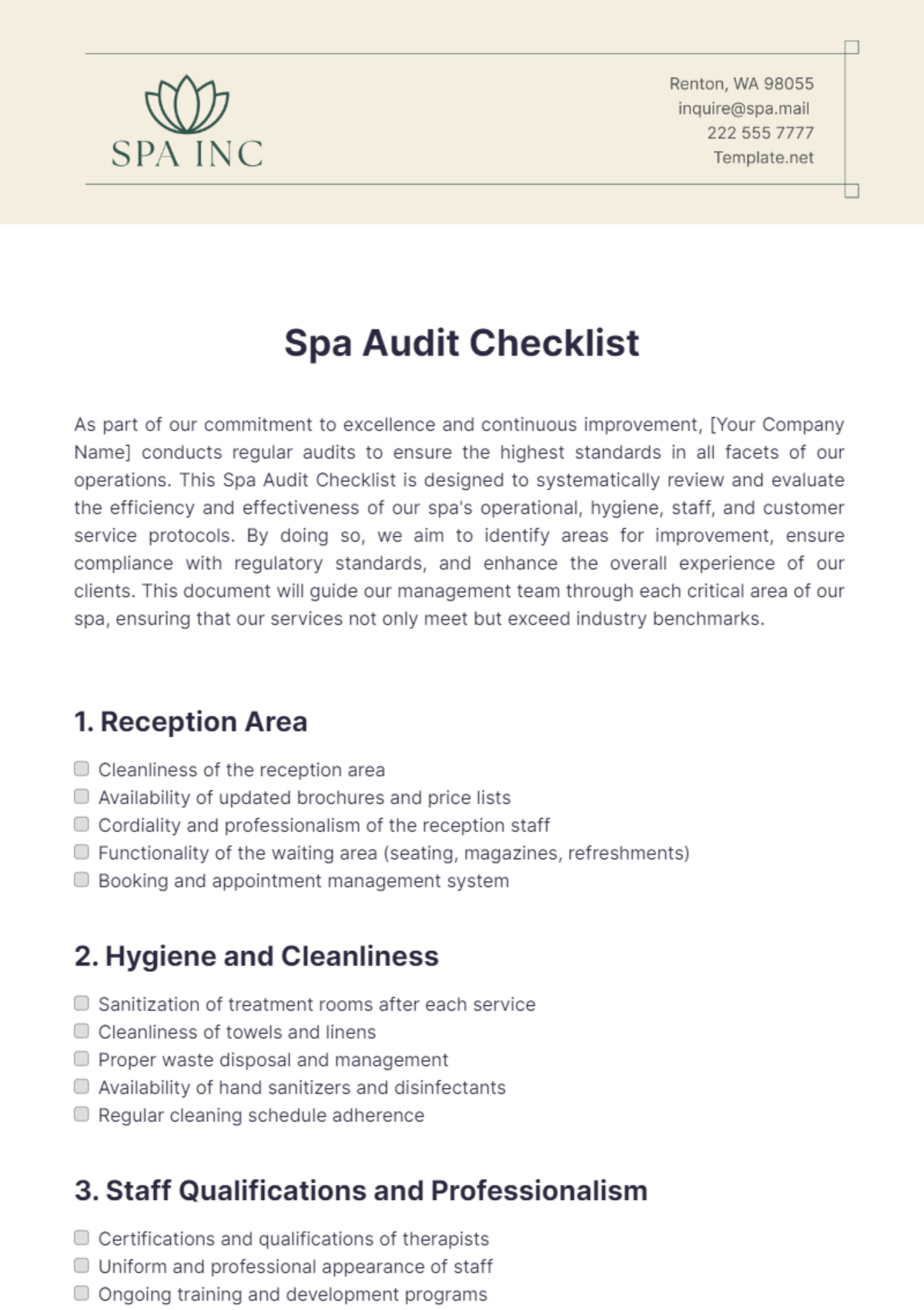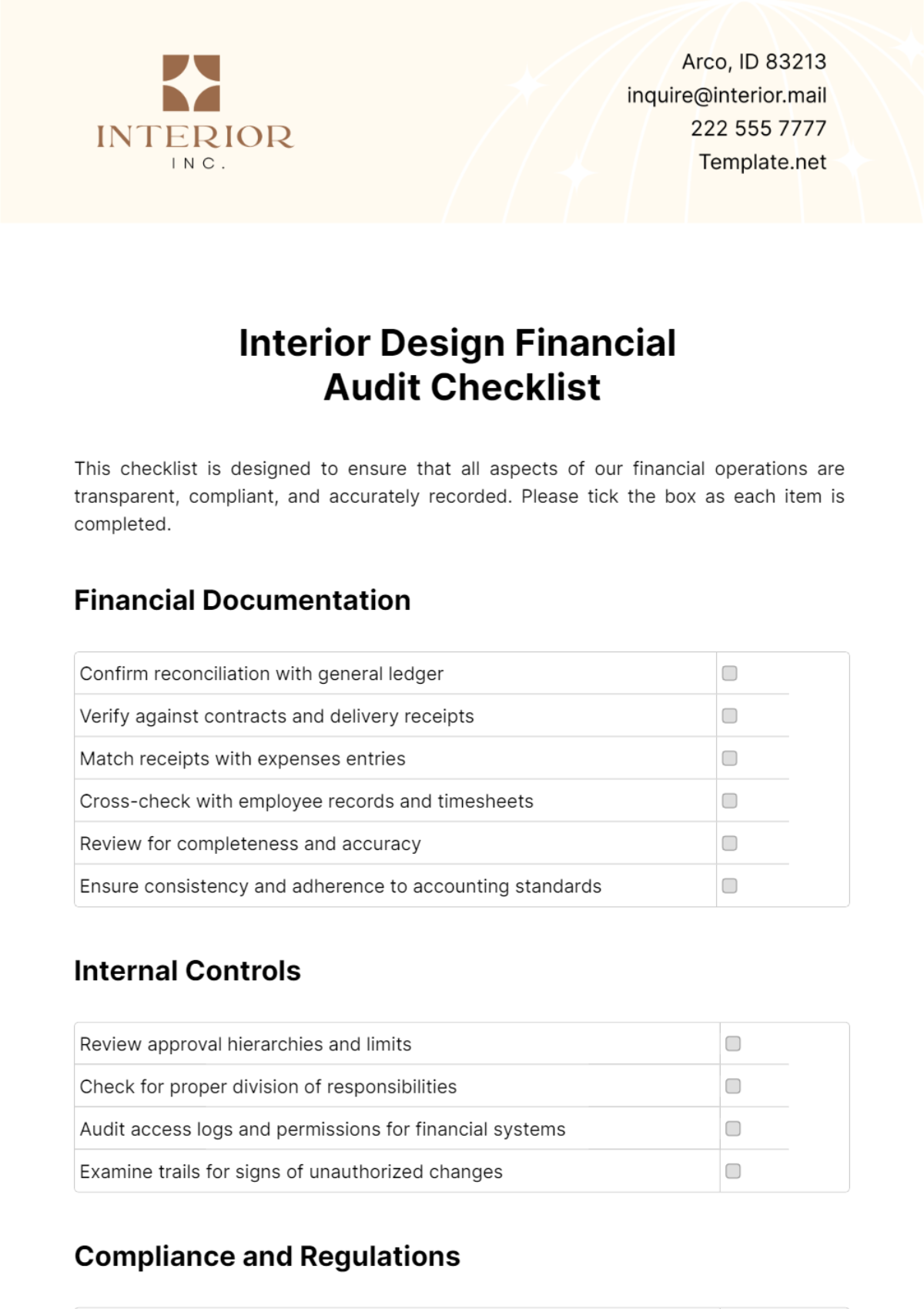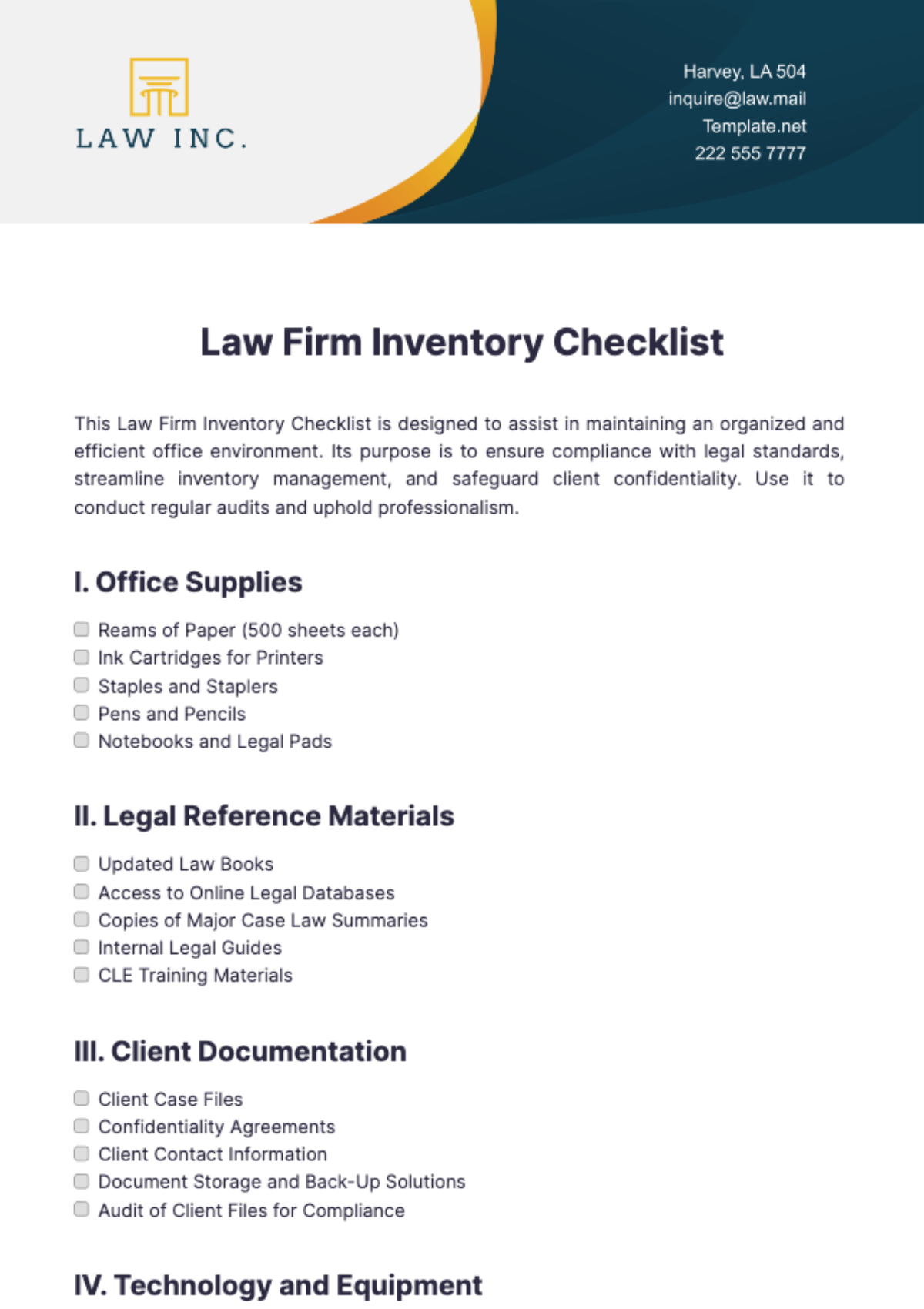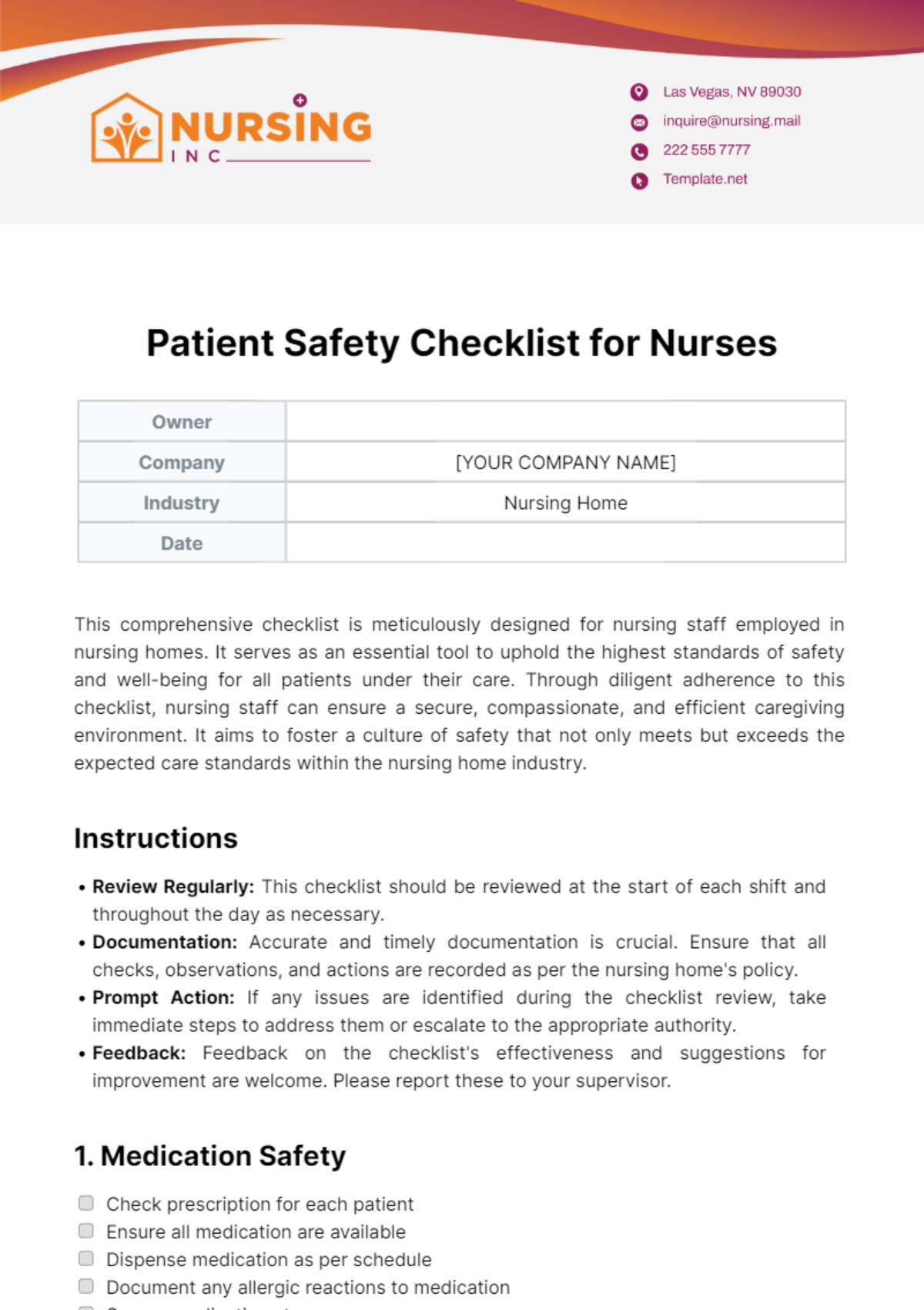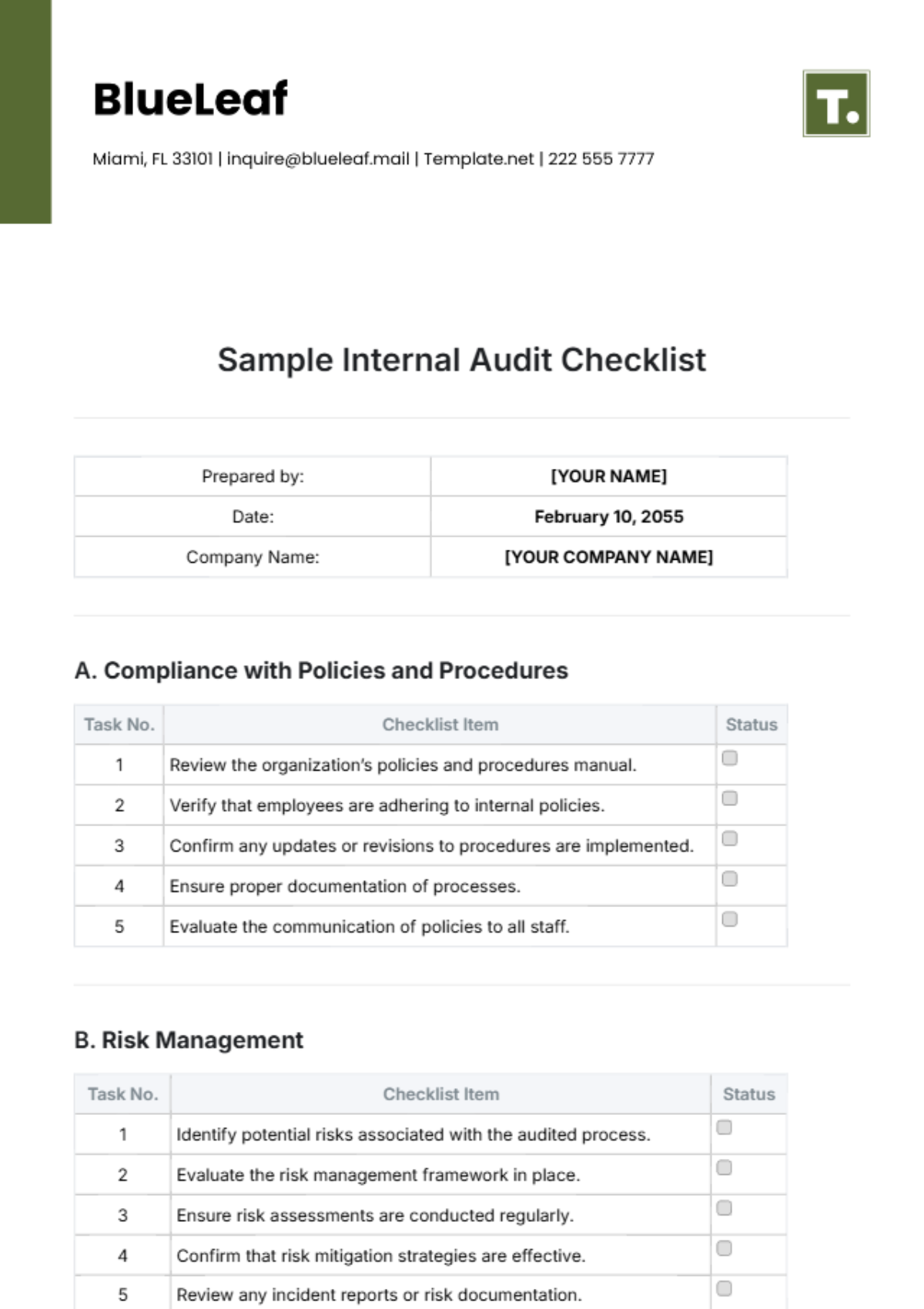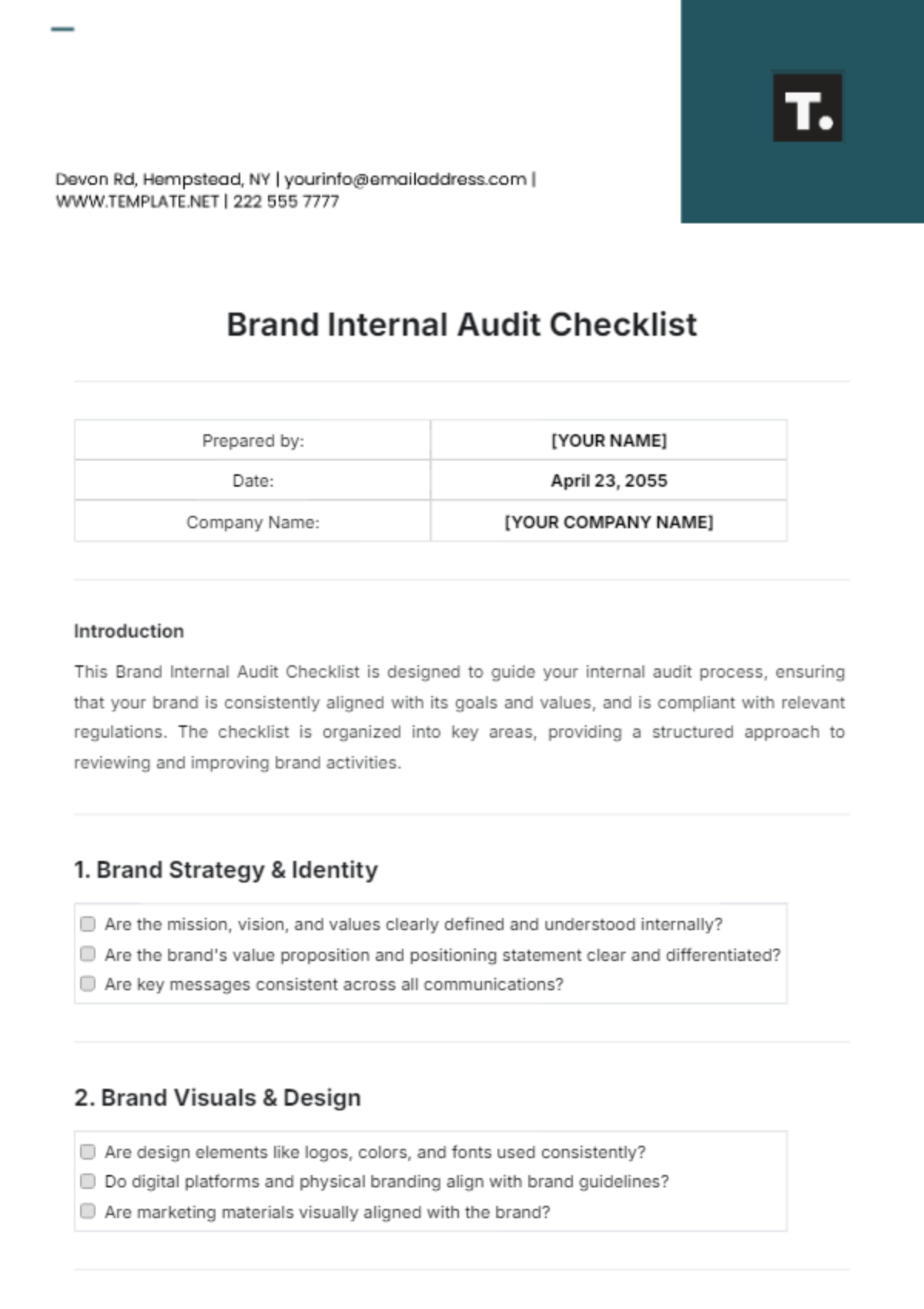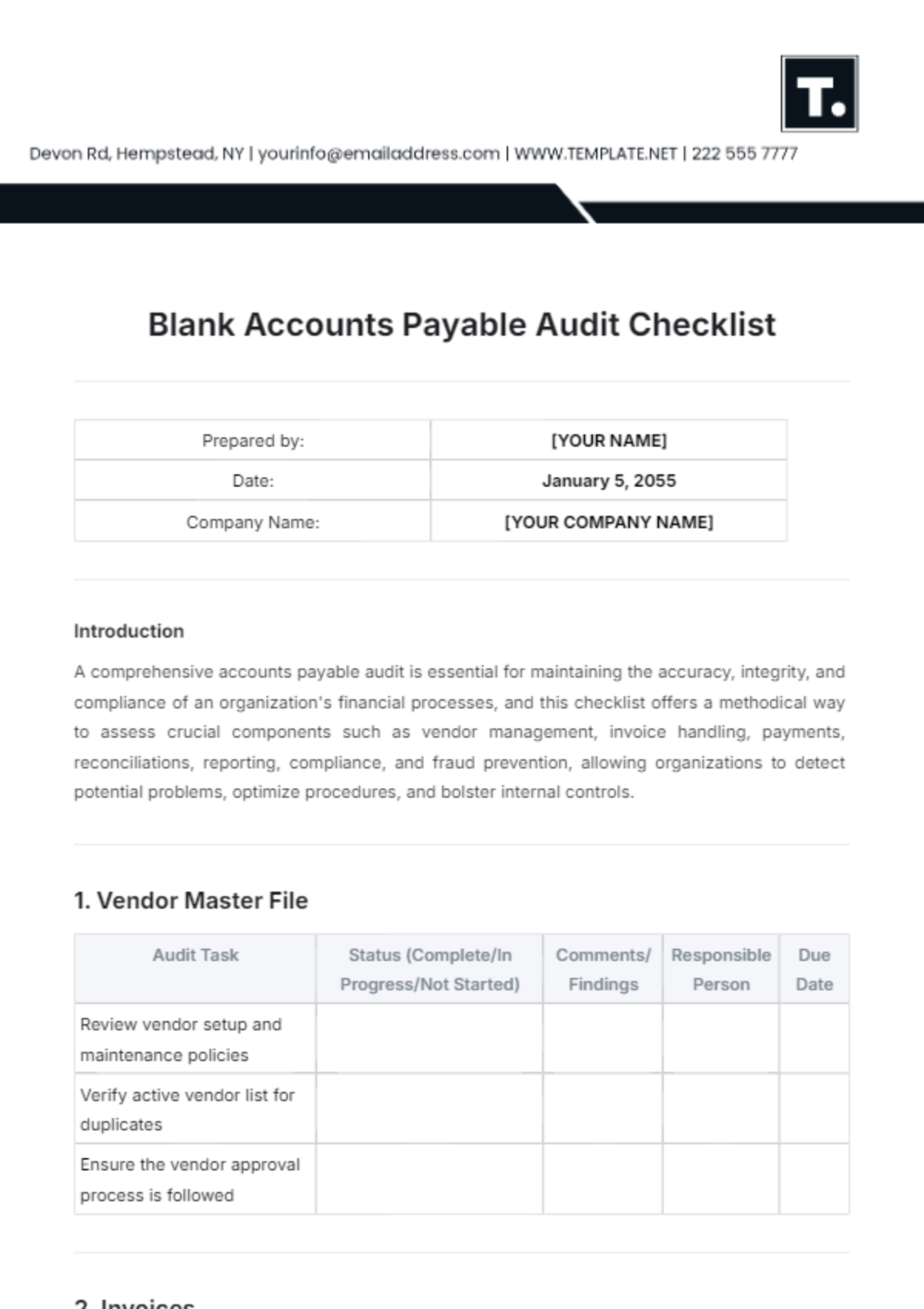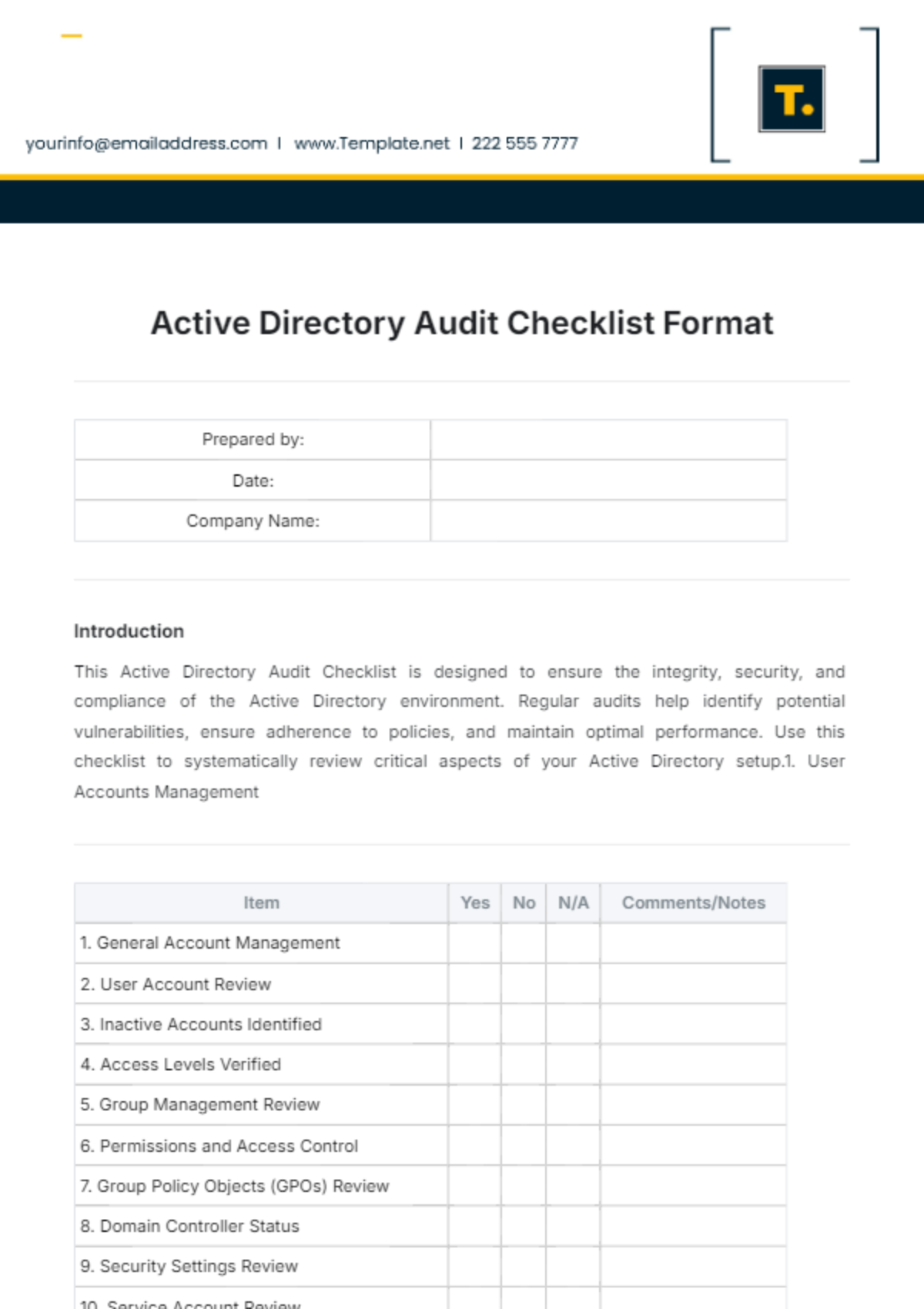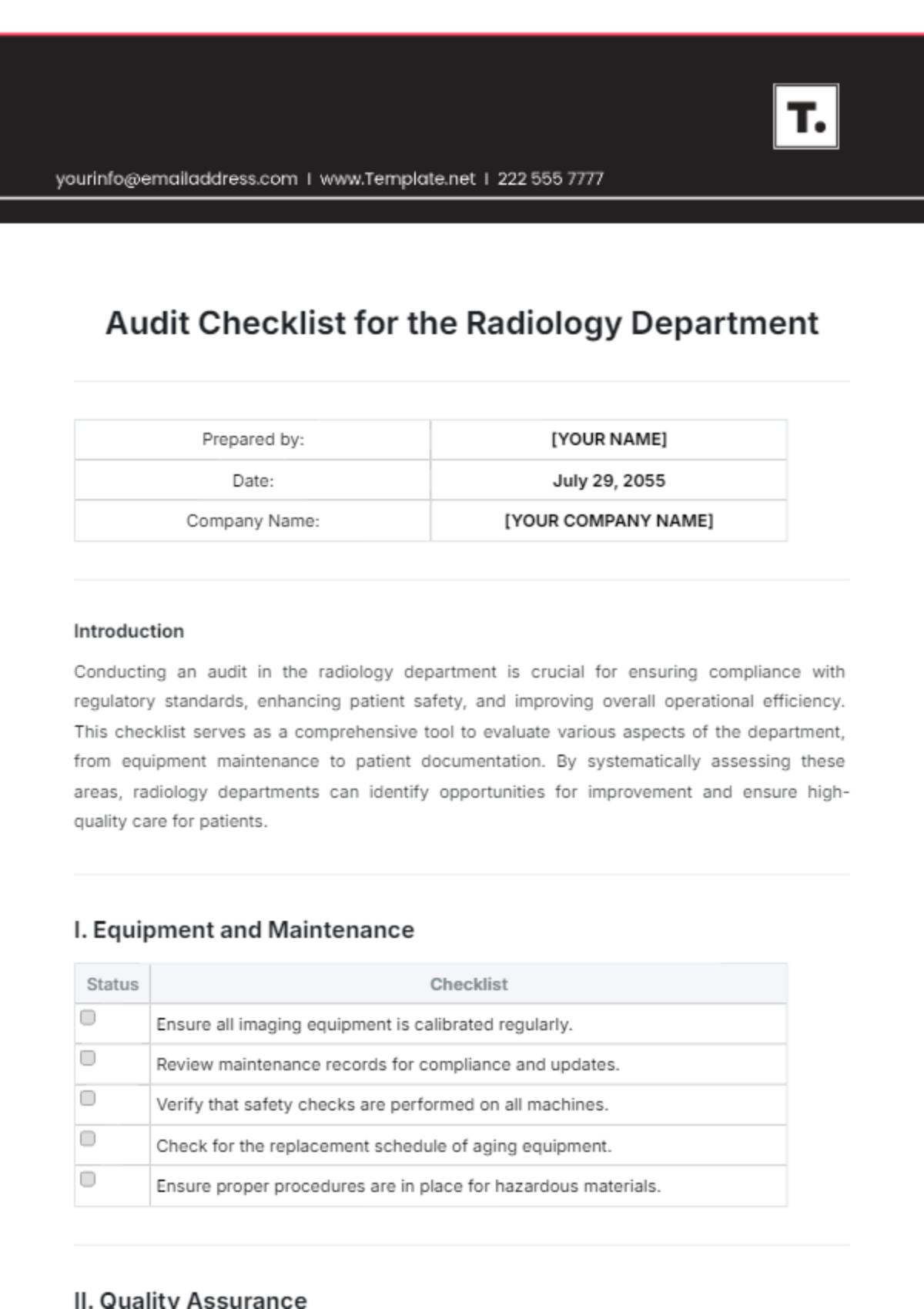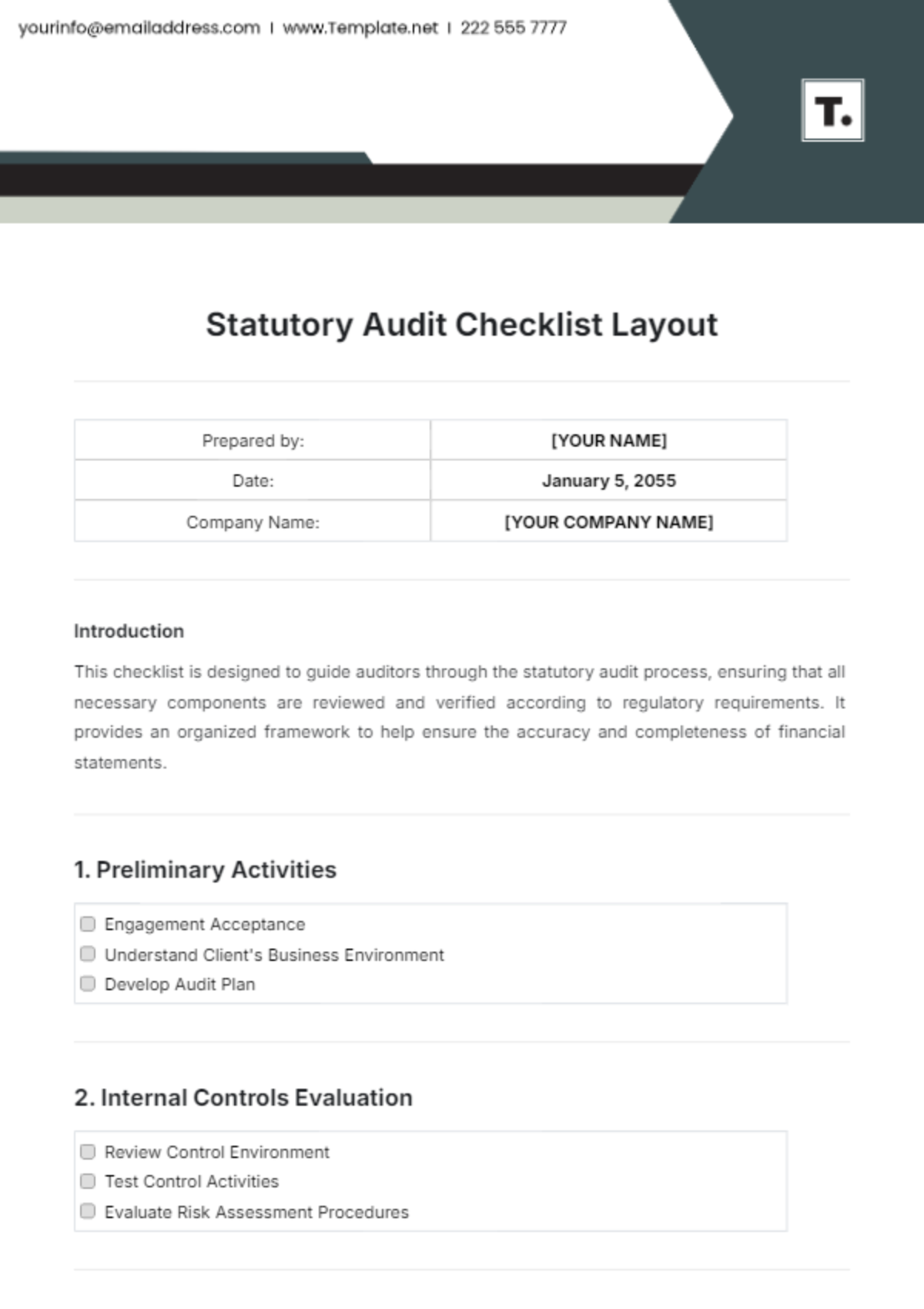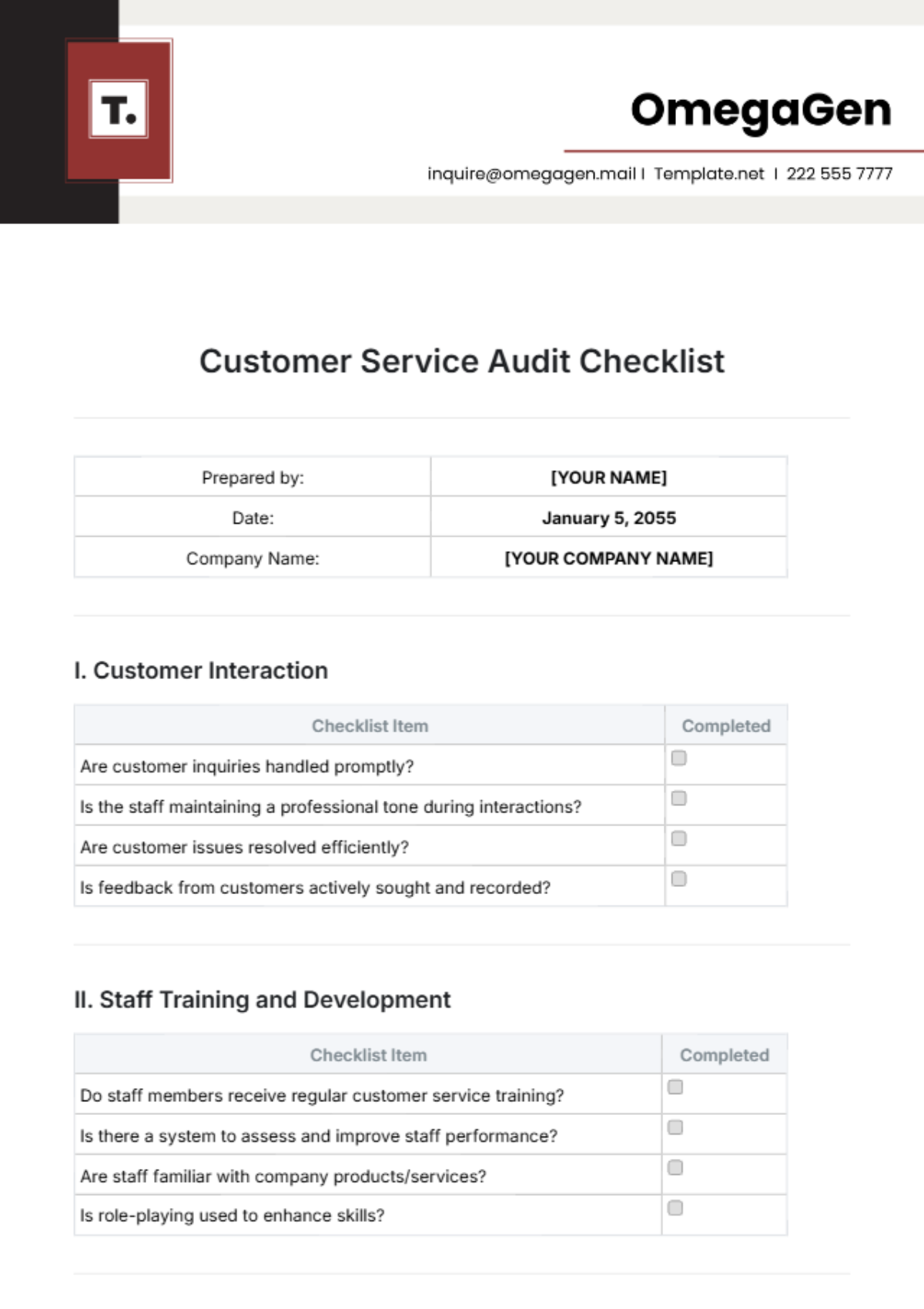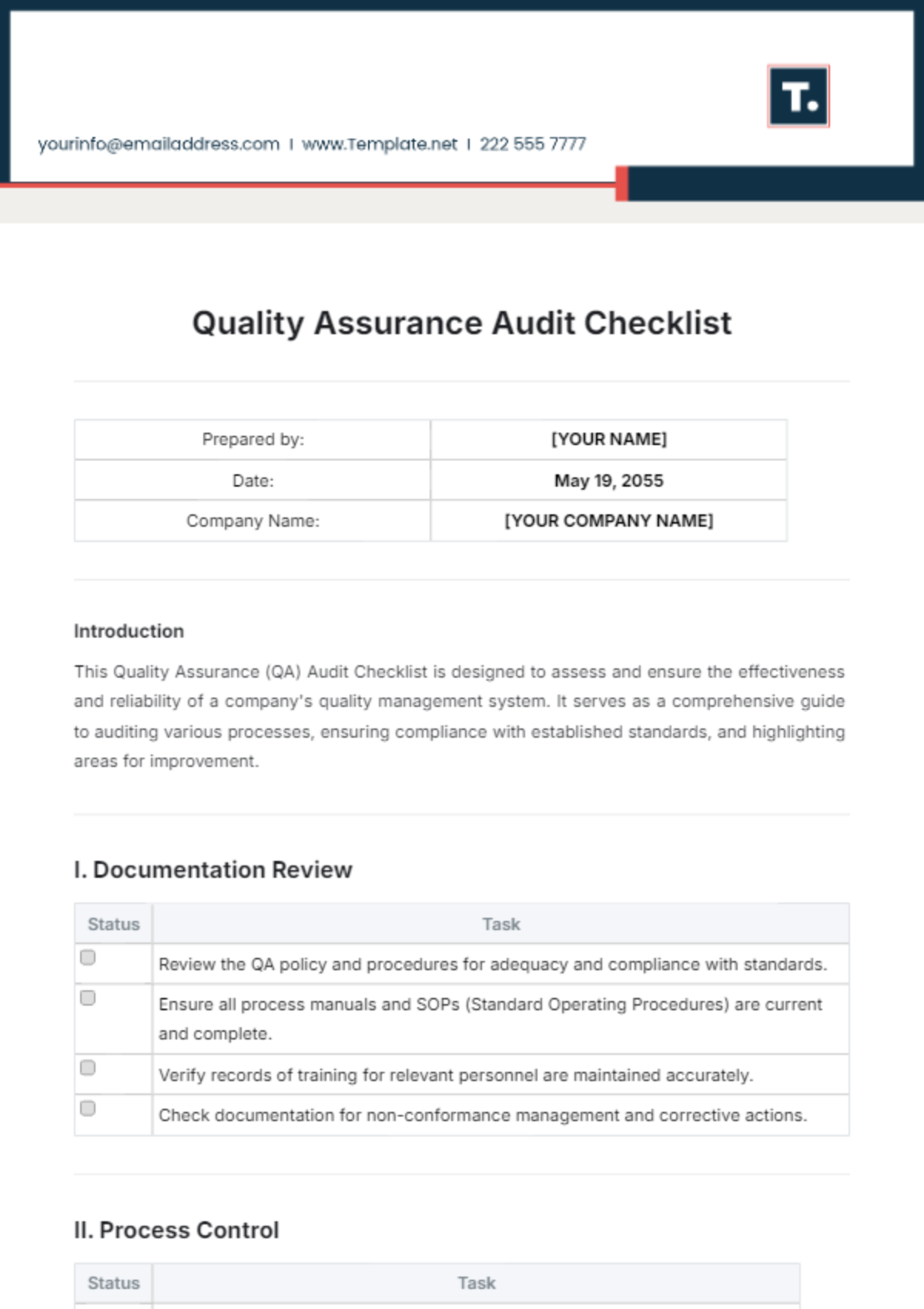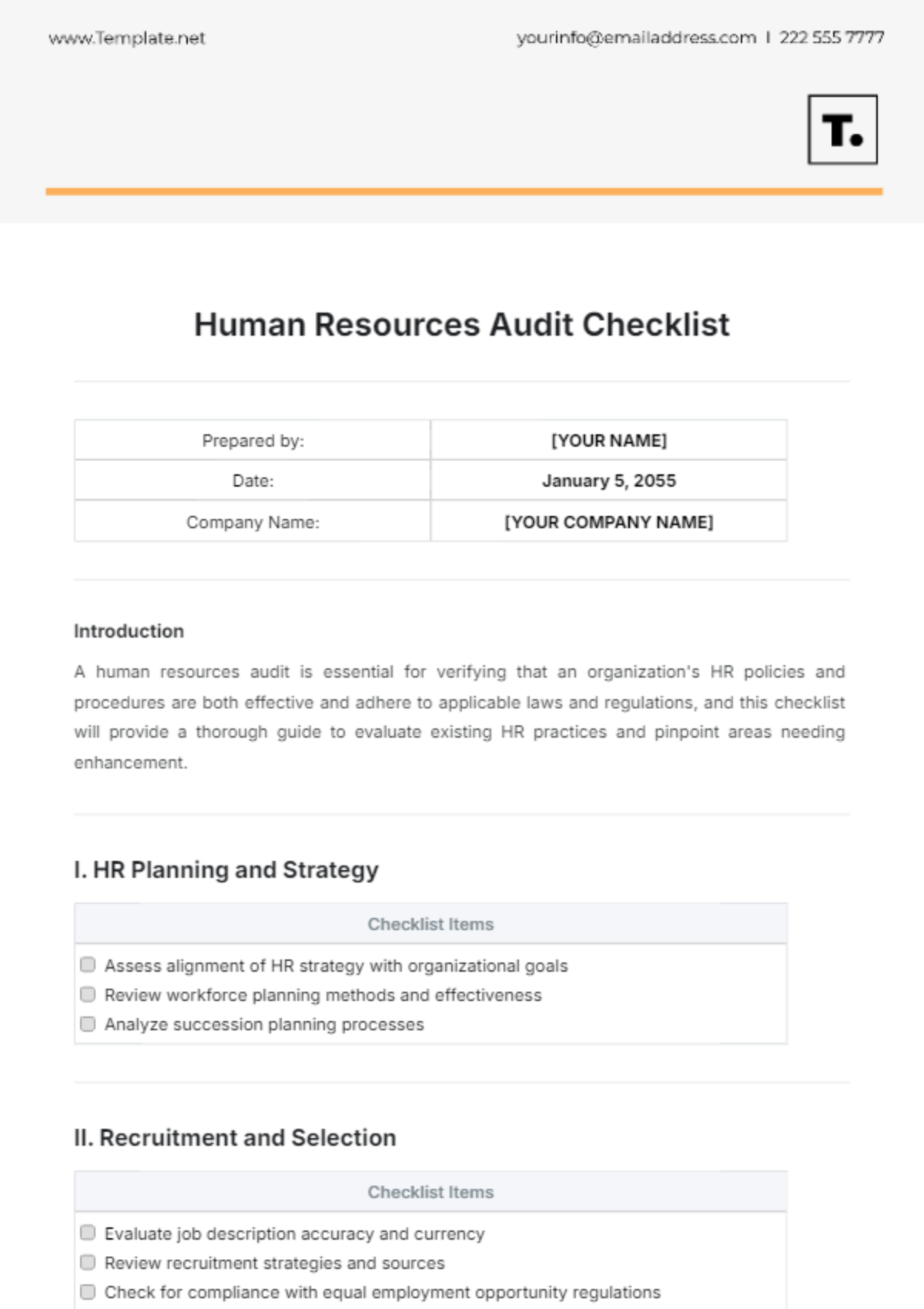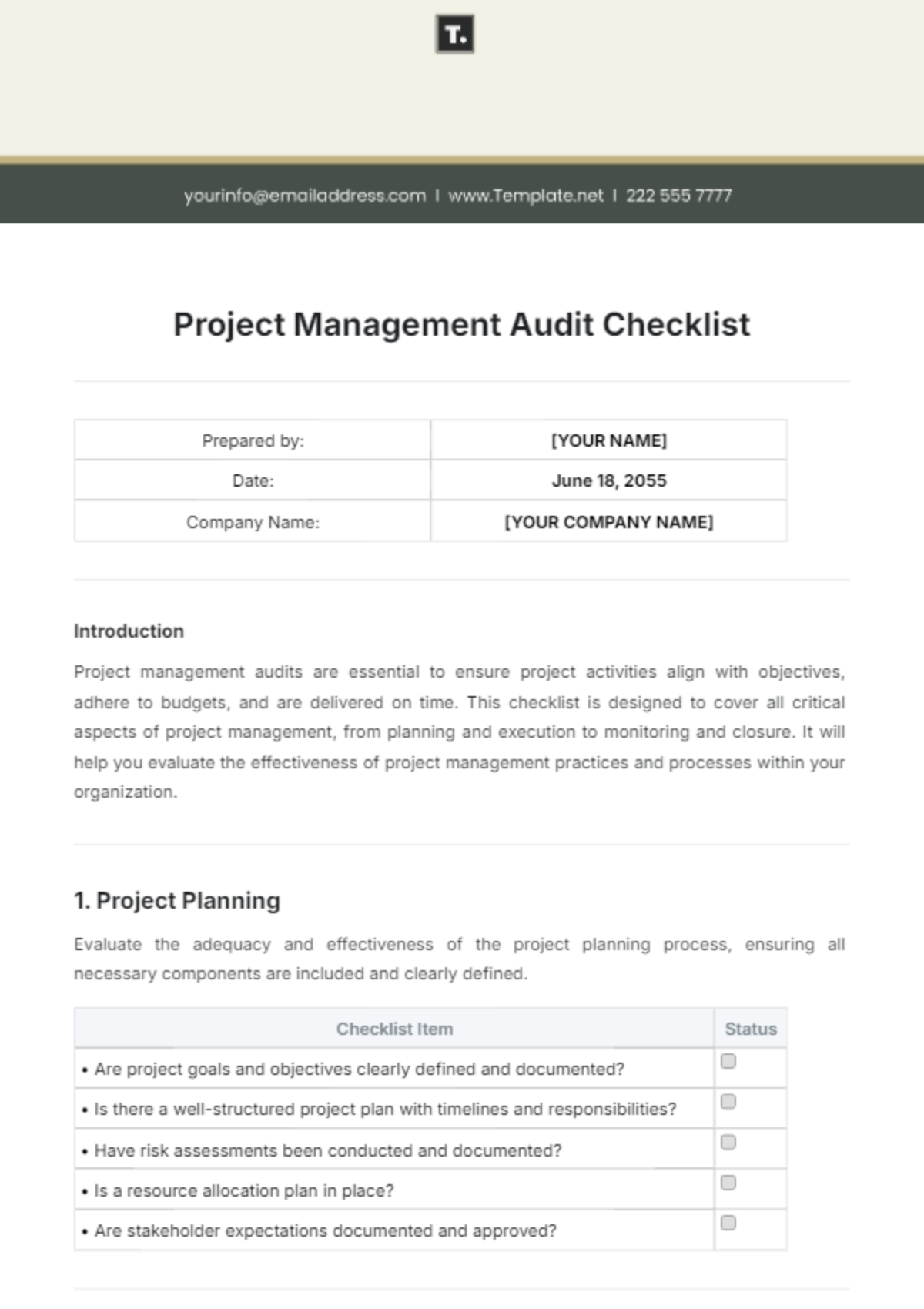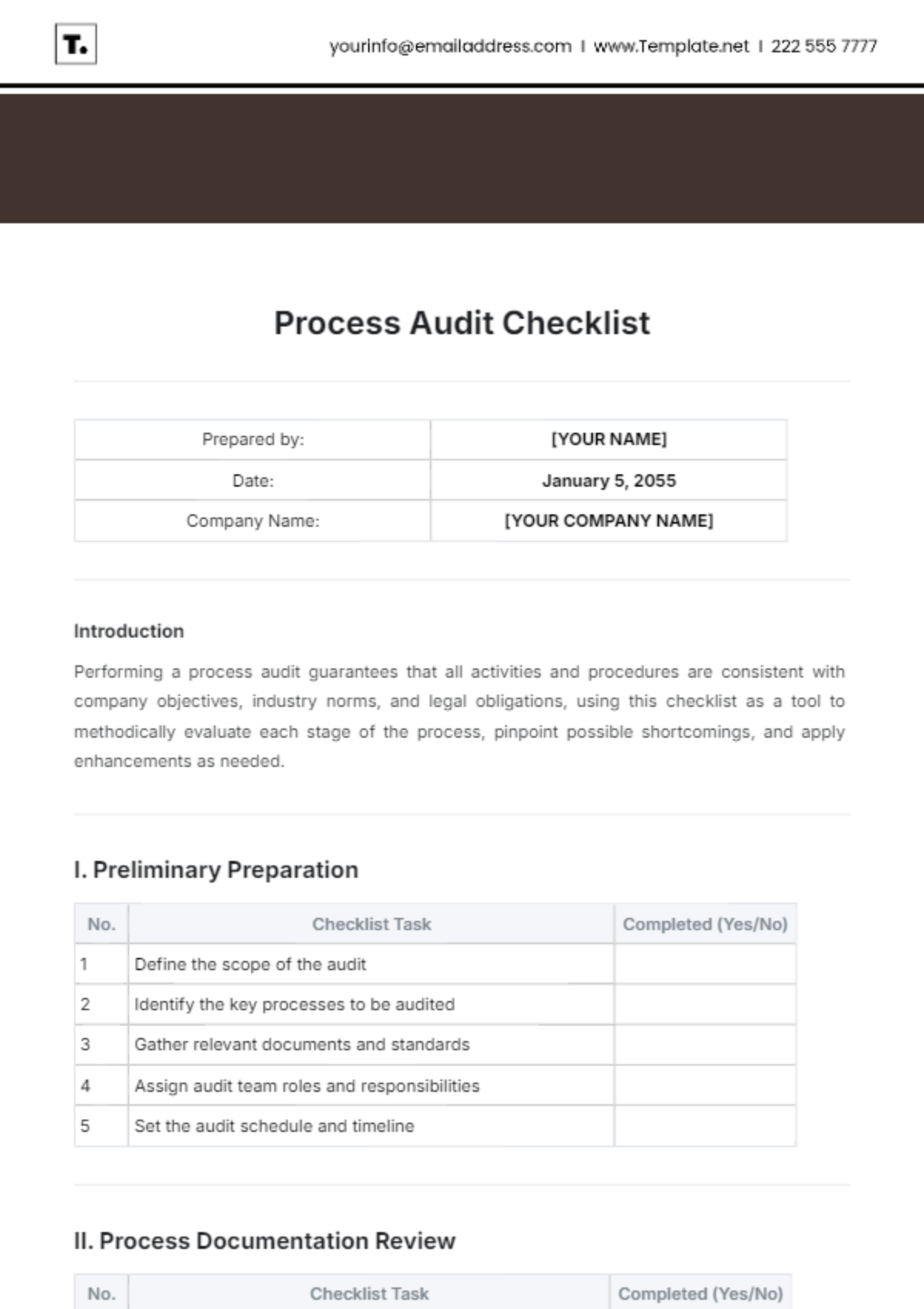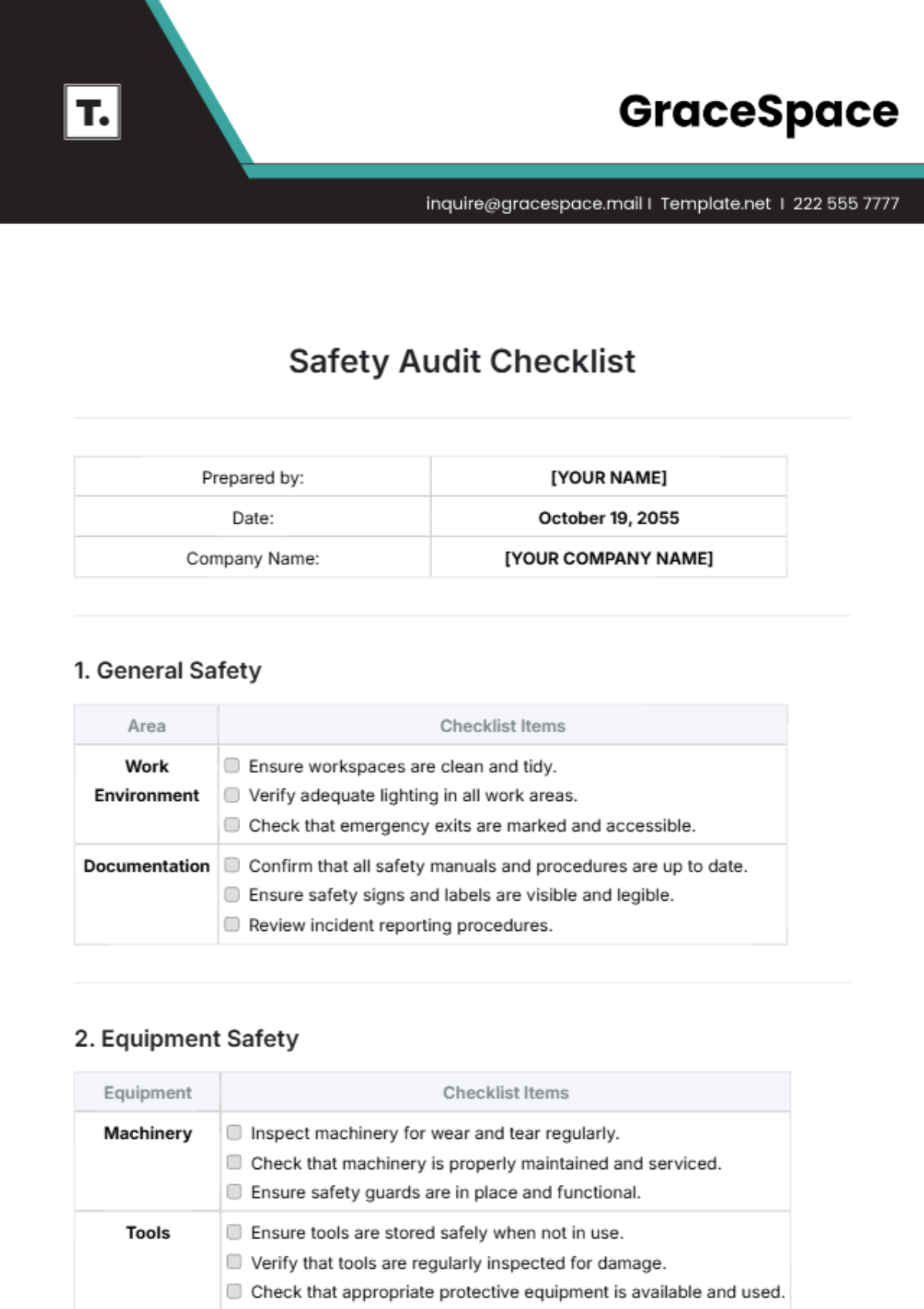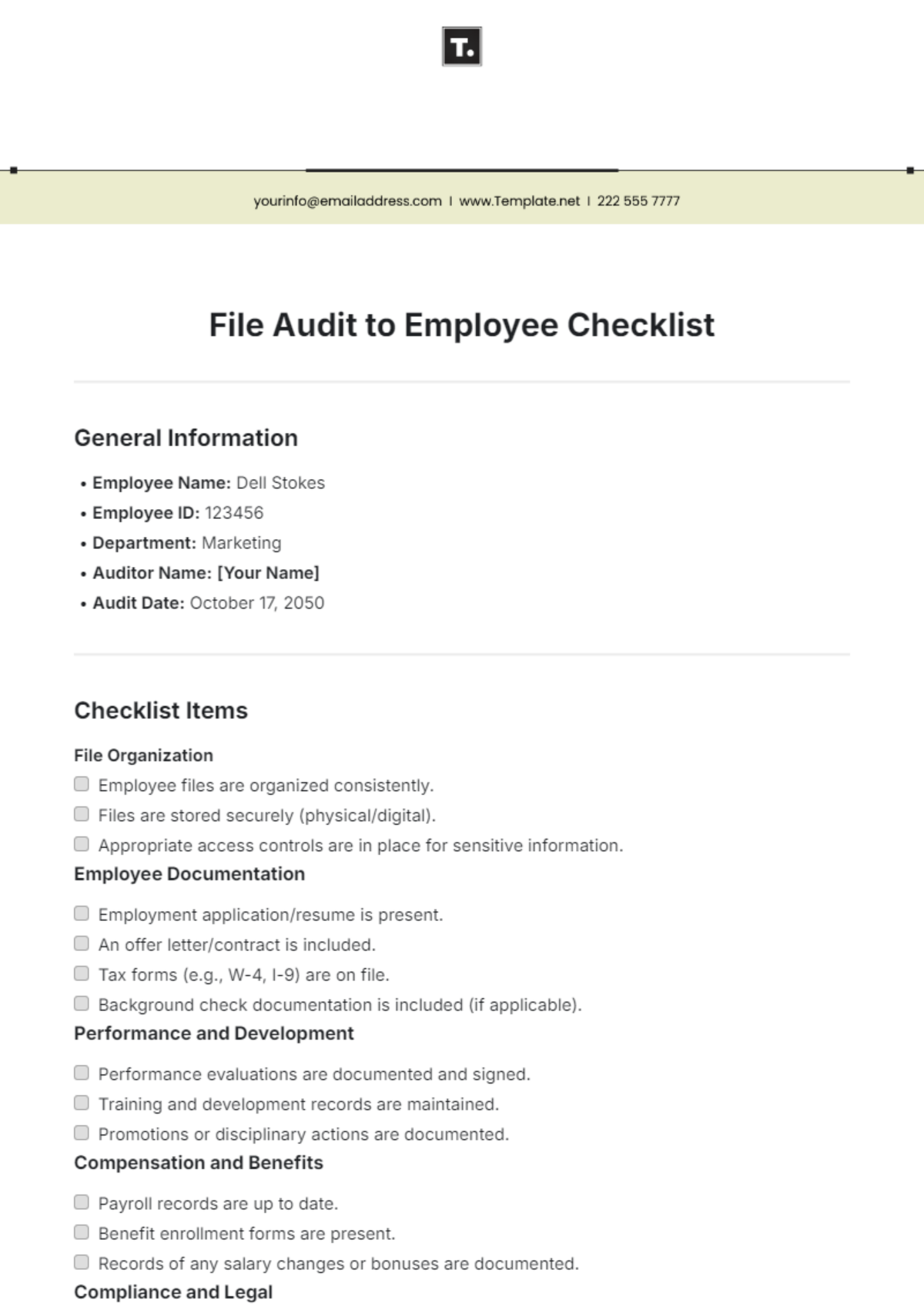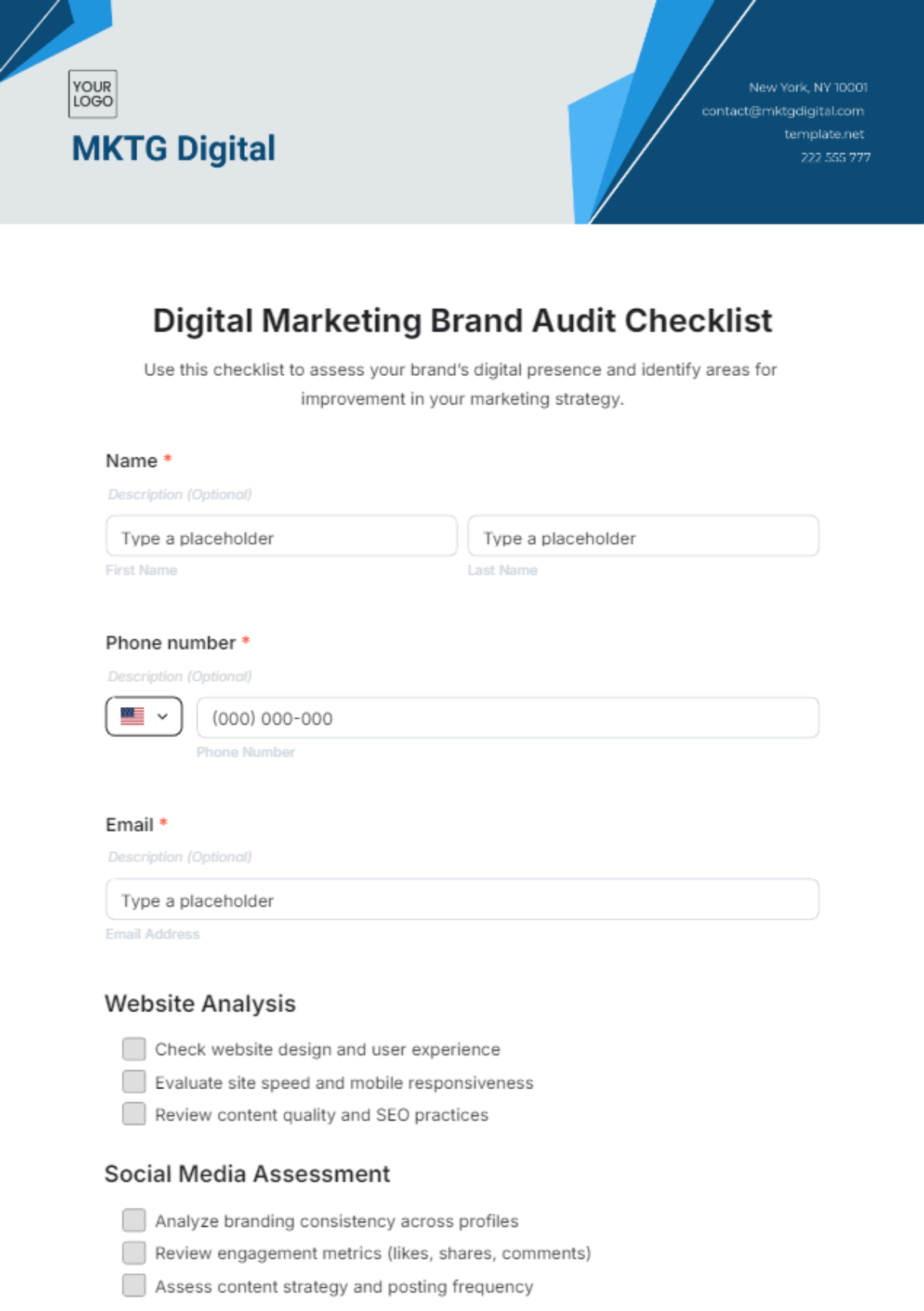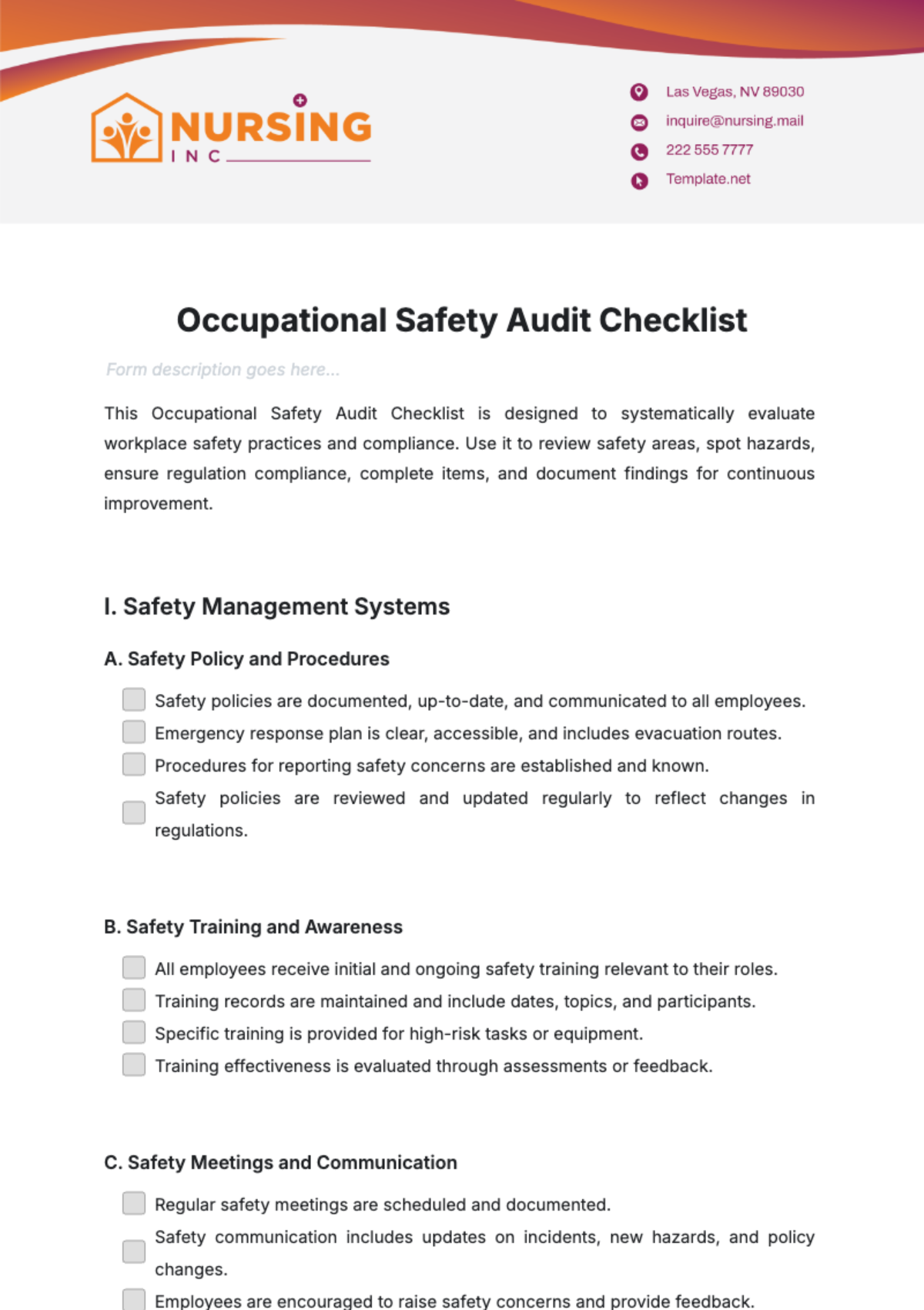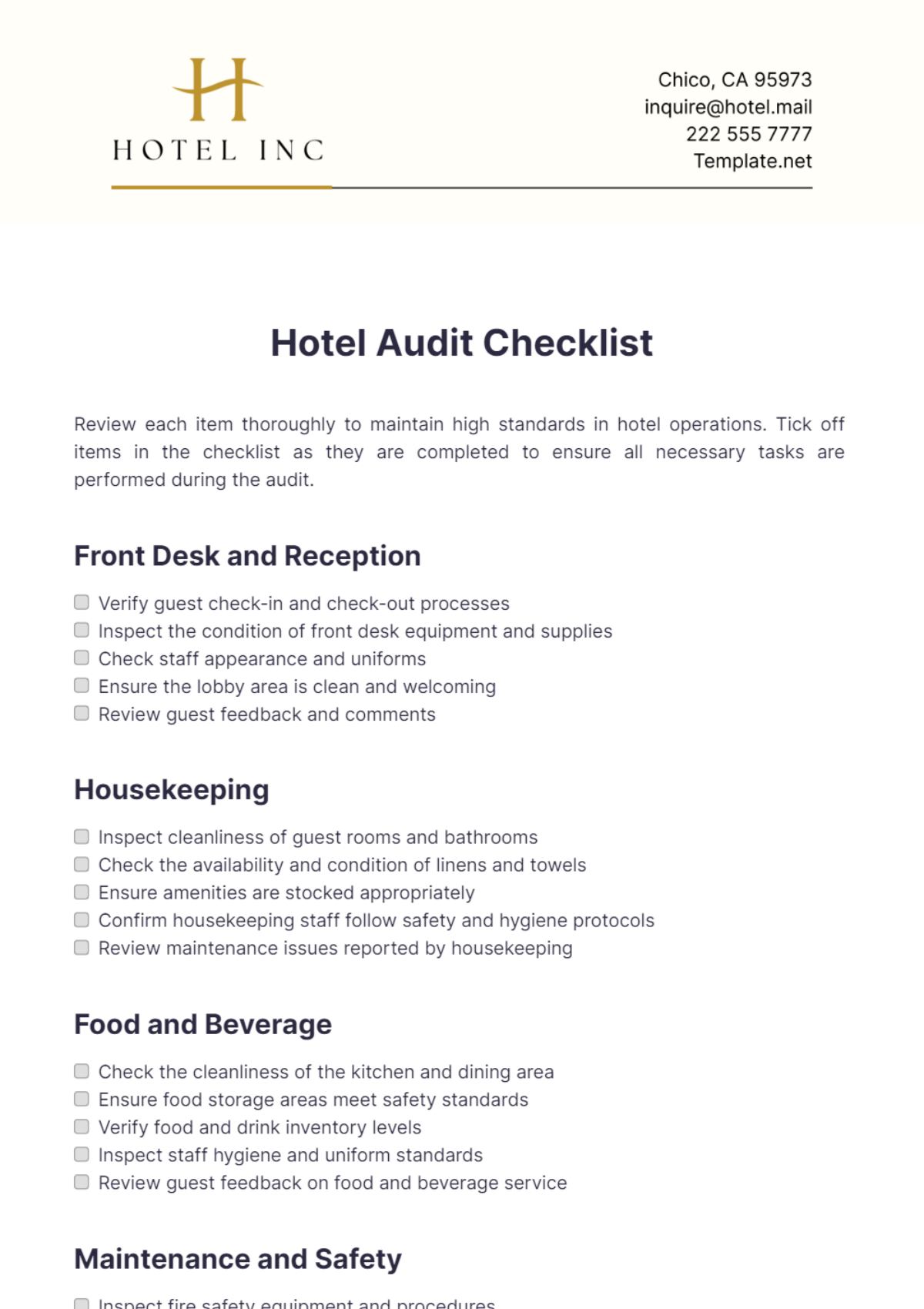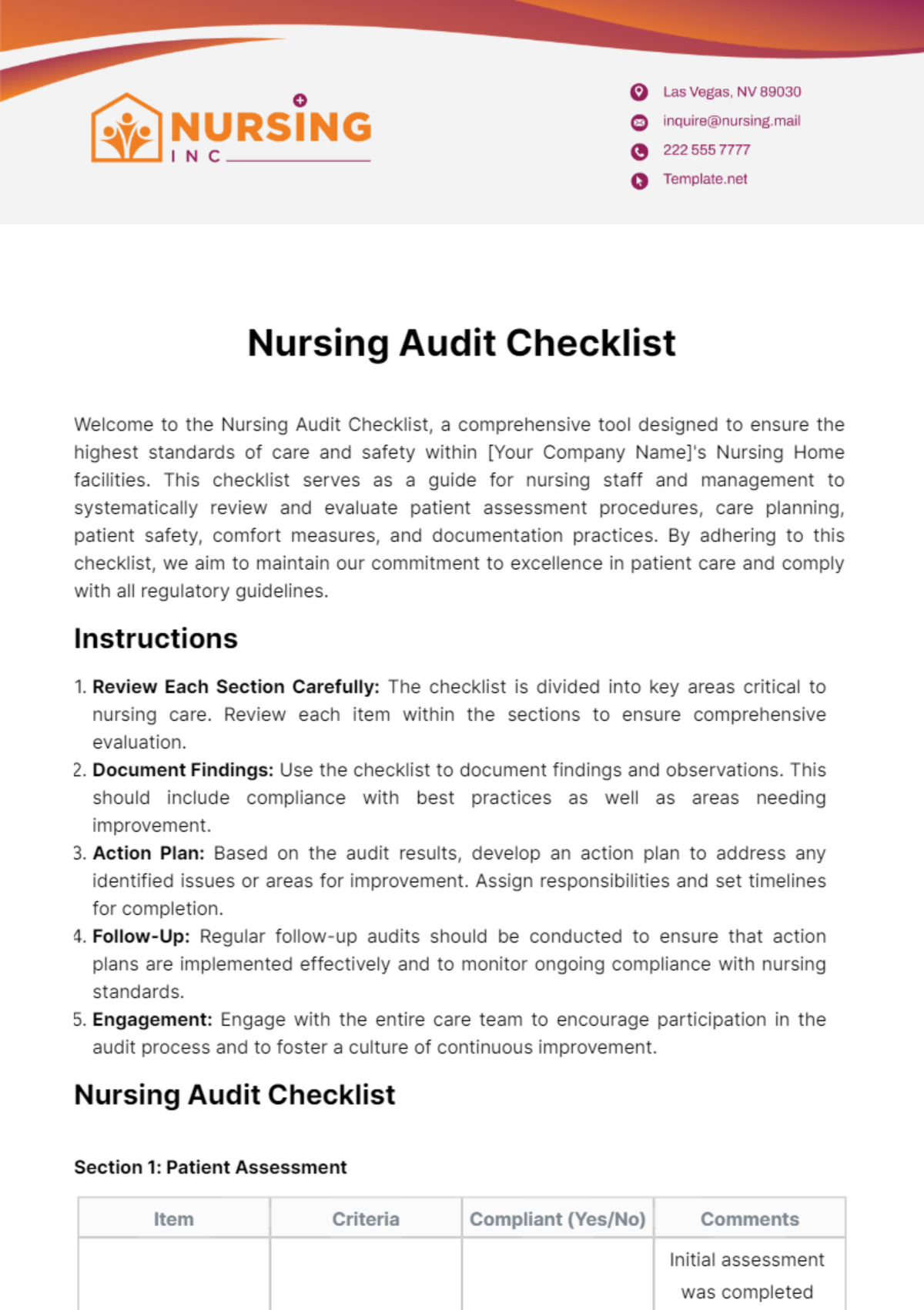Internal Audit Checklist
Audit Objective
The primary goal of this internal audit is to thoroughly evaluate and guarantee the effectiveness, efficiency, and compliance of the internal processes and controls within [Your Company Name]. This comprehensive assessment aims to scrutinize each operational aspect to identify strengths and areas for improvement, ensuring that all activities are performed by relevant regulations and industry benchmarks. Throughout the audit, adherence to established industry standards and best practices will be a guiding principle, aimed at fostering a culture of continuous improvement and robust governance within the company.
Audit Scope
Process Overview
Obtain and review documented process flows and procedures.
Verify alignment with industry standards and regulatory requirements.
Confirm that procedures are regularly updated and communicated.
Risk Assessment
Evaluate the effectiveness of the risk assessment process.
Ensure identification, analysis, and mitigation of key risks.
Confirm that risk assessments are conducted at regular intervals.
Control Environment
Assess the adequacy of internal controls.
Verify the existence of a control framework.
Confirm the segregation of duties and appropriate access controls.
Compliance
Verify compliance with relevant laws and regulations.
Confirm adherence to industry-specific standards.
Assess the effectiveness of compliance monitoring mechanisms.
Documentation and Recordkeeping
Confirm the existence of documented policies and procedures.
Assess the completeness and accuracy of recordkeeping.
Ensure records are retained for the required duration.
Monitoring and Reporting
Assess the effectiveness of monitoring mechanisms.
Verify the accuracy and timeliness of reporting.
Confirm the existence of a process for reporting non-compliance.
Follow-Up Actions
Conduct a follow-up audit within 3 months after the initial audit.
Implement ongoing monitoring of employee training and development.
Provide training to relevant staff on identified issues.
